7 STEP PLANNING GUIDE TO BIKEPACKING THE TOUR DIVIDE (GDMBR)
EASY TO FOLLOW STEPS TO GET YOU ON THE TOUR DIVIDE.
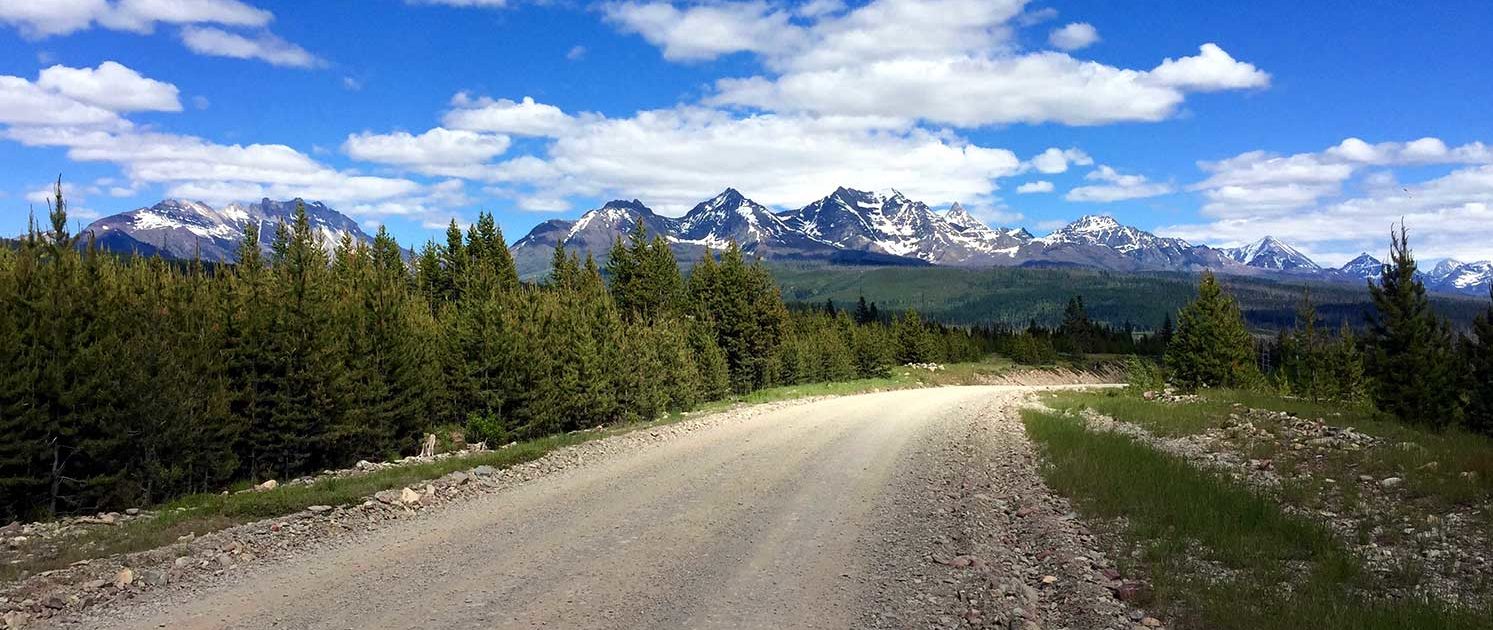

Tour Divide Made Easy: Essential Step-by-Step Planning Guide
After completing the bikepacking triple crown, I created this Tour Divide Planning Guide to share the invaluable knowledge I gained. Planning a trip of this magnitude can be time-consuming and stressful, but it’s crucial to your success.
Effective planning is essential and can significantly impact the outcome of your race or tour. The more preparation you do beforehand and the more information you have during the race, the better off you’ll be. Bottom line: DO YOUR HOMEWORK!
I’ve compiled everything I learned from the Tour Divide, CTR, and AZT into this 7-Step Planning Guide for racing or touring the Tour Divide. I hope this guide, along with the accompanying posts and external links, provides you with almost all the information you need. Additionally, I offer detailed Tour Divide Planning Aids to further enhance your preparation and planning efforts.
While I’ve done a lot of the legwork for you, it’s important to do your own in-depth research to further improve your chances and the outcome of your trip. If I missed anything, please let me know, and I’ll add or correct it. Thanks!
Do you find this page valuable?
Shopping with our affiliates helps fund the development of content like this.
Share this entry
- Share on Facebook
- Share by Mail
New Customer Offer - Get 15% Off Your First Purchase at CompetitiveCyclist.com! Exclusions apply.
STEP 1: RACE OR TOUR
RACING PROS:
- Challenge and Achievement: Racing the Tour Divide offers a significant physical and mental challenge, providing a sense of accomplishment upon completion.
- Competitive Spirit: For those who enjoy competition, racing can be an exciting way to push personal limits and compete against others.
- Community and Camaraderie: Racing often fosters a strong sense of community among participants, with opportunities to meet like-minded individuals and form lasting connections.
- Focus on Efficiency: Racing encourages efficiency in all aspects of bikepacking, from route planning to gear selection, honing skills that can be valuable for future adventures.
- Personal Growth: Overcoming the challenges of racing can lead to personal growth, increased confidence, and a better understanding of one’s capabilities.
TOURING PROS:
- Flexible Pace: Touring allows riders to set their own pace, taking time to enjoy the scenery, rest when needed, and explore interesting areas along the route.
- Lower Physical Demand: While still challenging, touring at a more relaxed pace reduces the physical and mental strain compared to racing.
- Enhanced Experience: Touring provides more opportunities to interact with local communities, appreciate the natural beauty, and immerse oneself in the journey.
- Safety and Preparedness: A slower pace allows for better management of risks, more thorough resupply planning, and increased safety.
- Customization: Riders can customize their itinerary, making detours to visit attractions or adjust their route based on personal preferences and conditions.
RACING CONS:
- Intense Physical Demand: Racing the Tour Divide is extremely physically demanding, requiring peak fitness and endurance.
- Time Pressure: The race format imposes time constraints, which can add stress and limit opportunities to enjoy the scenery and explore interesting locations.
- Higher Risk: The fast pace and push for efficiency can increase the risk of injury, mechanical issues, and other hazards.
- Limited Resupply Options: Racing may limit the ability to thoroughly plan and utilize resupply points, potentially leading to food and water shortages.
- Less Flexibility: The need to adhere to a strict schedule leaves little room for unexpected delays or changes in plans.
TOURING CONS:
- Longer Duration: Touring takes more time, which may be a constraint for those with limited availability.
- Logistical Complexity: Extended tours require more comprehensive planning for accommodations, resupplies, and potential route changes.
- Increased Costs: The longer duration and potential for more frequent stops can increase the overall cost of the trip.
- Possible Isolation: Depending on the chosen pace and stops, touring may result in less interaction with other riders and the bikepacking community.
- Maintenance and Wear: The longer time on the trail increases the likelihood of encountering bike maintenance issues and wear on gear.
- Slightly higher risk: There are less people and support if you get injured or have a bike issues.
Final Thoughts
Both racing and touring the Tour Divide offer unique experiences and challenges, and the best choice depends on individual preferences, goals, and capabilities.
STEP 2: PICK A DATE
The race always starts on the second Friday in June.
- 2nd Friday of June (Banff, AB – YMCA)
If racing isn’t your style and you prefer more flexibility, touring the Tour Divide might be the perfect choice for you. The ideal weather window for the Tour Divide stretches from June to mid-October. However, snow can appear at any time along the route, so it’s crucial to be prepared for all conditions, no matter when you embark on your journey.
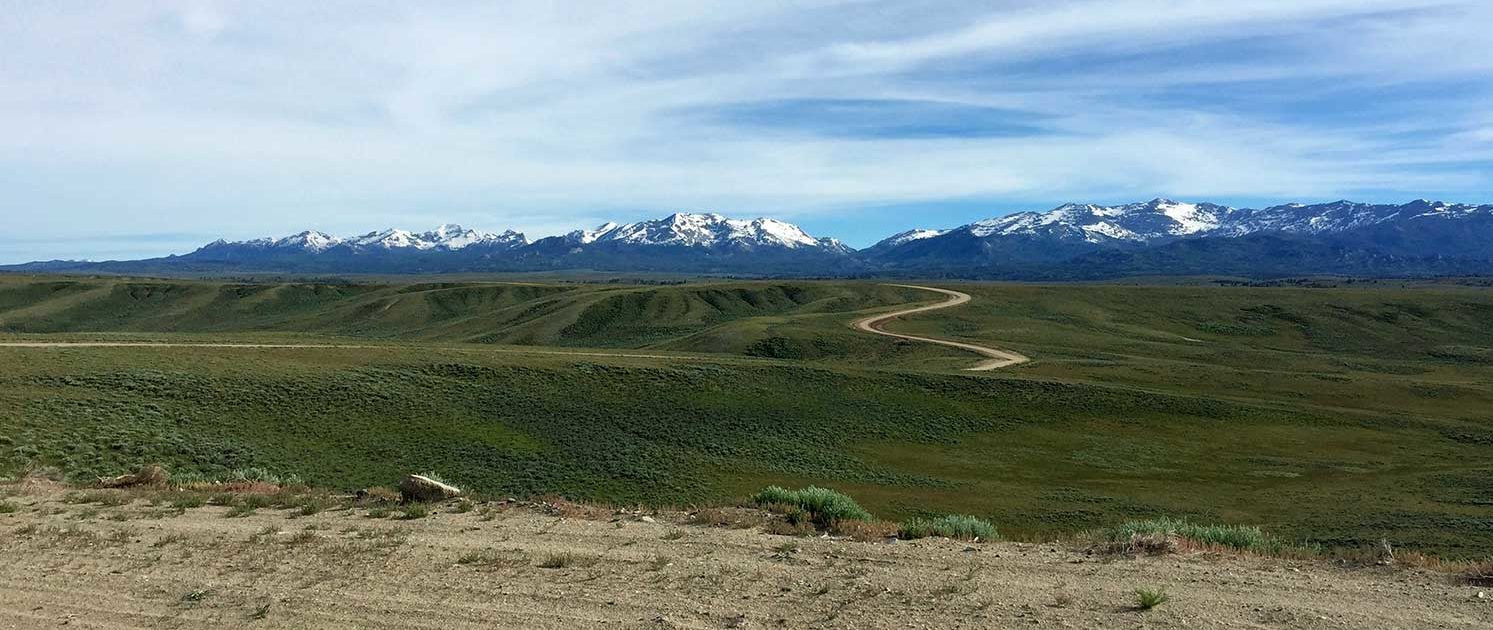
STEP 3: WHICH DIRECTION TO GO?
North to south (canada to mexico):.
- Warmer Weather Progression: Starting in Banff in June allows riders to follow the warming weather as they move south, avoiding the early spring chill.
- Popular Direction: SOBO is the traditional direction for the Tour Divide race, providing a sense of camaraderie and community with other riders.
- Logistics: Easier to start with the Tour Divide Grand Depart, which offers a set start date and community support.
- Physical Demands: The start is harder in the north vs starting from the south.
- Weather: Starting in the north can mean snow and early season rains making progress tough.
- Crowded Start: The start in Banff can be crowded with many riders beginning at the same time, leading to congestion.
- Heat in the South: Reaching the southern sections in summer can result in extreme heat, particularly in New Mexico.
SOUTH TO NORTH (Mexico to Canada)
- Physical Demands: Starting in the south is an easier start.
- Logistics: More convenient finish (getting to airport).
- Cooler Weather in the South: Starting in the warmer south and progressing northwards allows riders to enjoy cooler temperatures in New Mexico and Colorado.
- Less Congestion: Fewer riders travel NOBO, leading to a more solitary and peaceful experience.
- Avoid Heat: Avoiding the extreme summer heat of the southern sections by starting there earlier in the season.
- Logistical Complexity: Starting in Antelope Wells, NM, is more remote and less convenient for travel logistics compared to Banff.
- Physical Demands: Finish in the north means more climbing at the end of your trip.
- Less Congestion: Fewer riders travel NOBO, can mean long days and extended loneliness.
Choosing the direction for your Tour Divide journey depends on your preferences for weather, terrain, crowd levels, and logistical convenience. Each direction offers unique challenges and rewards, so consider these factors carefully when planning your adventure.
Tour Divide Planning Aids
Welcome to The Project’s Planning Aids, designed to bridge the gap left by the lack of high-quality planning tools within bikepacking. As a Triple Crown thru-hiker, I’m accustomed to comprehensive planning resources, and I noticed that bikepacking needed similar quality tools. That’s why I developed these resources to make your Tour Divide adventure as smooth and well-prepared as possible.
Our planning aids include four distinct styles to help you plan your ride:
- The Data Sheet offers the most detailed information, including distance, elevation +/-, resupply options, notes and more for key POI.
- Town List provides cumulative distances between POI, and does the math so you don’t have to.
- Mileage Chart and Elevation Gain Chart are simple graphs showing cumulative mileage and elevation gain between POI.
Each tool serves a unique purpose to support your planning and navigation needs.
Explore our offerings to find the perfect combination for your needs and get ready to conquer the Tour Divide! Don’t forget to checkout our online Tour Divide Resources as well.
Craig, I wanted to let you know that your bikepacking guides are incredibly well done and useful.
Small Bundles:
Big bundles:.
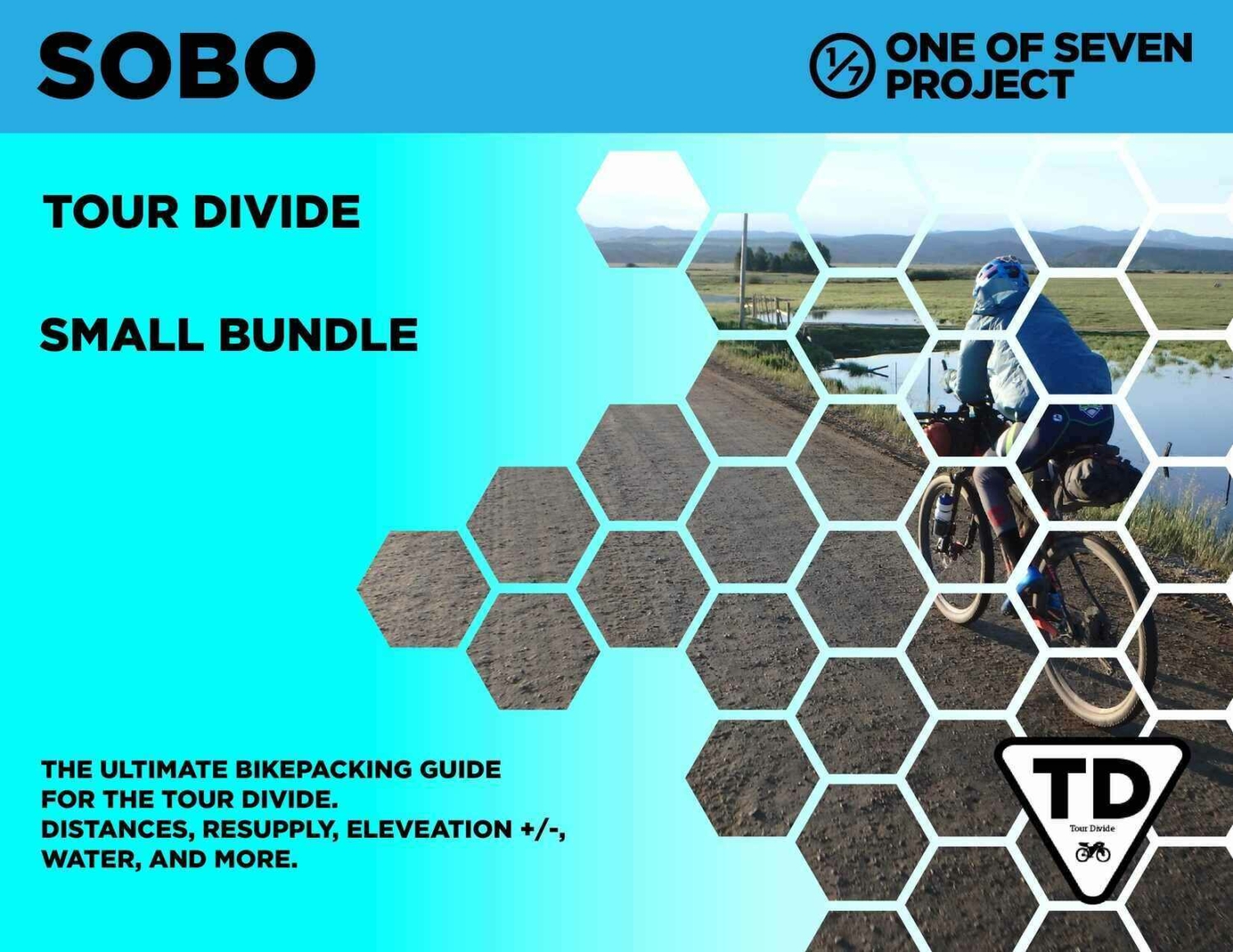
Click “Buy Now” button below to visit 1/7 Store with larger examples and more details.
One package including our two most popular planning aids.
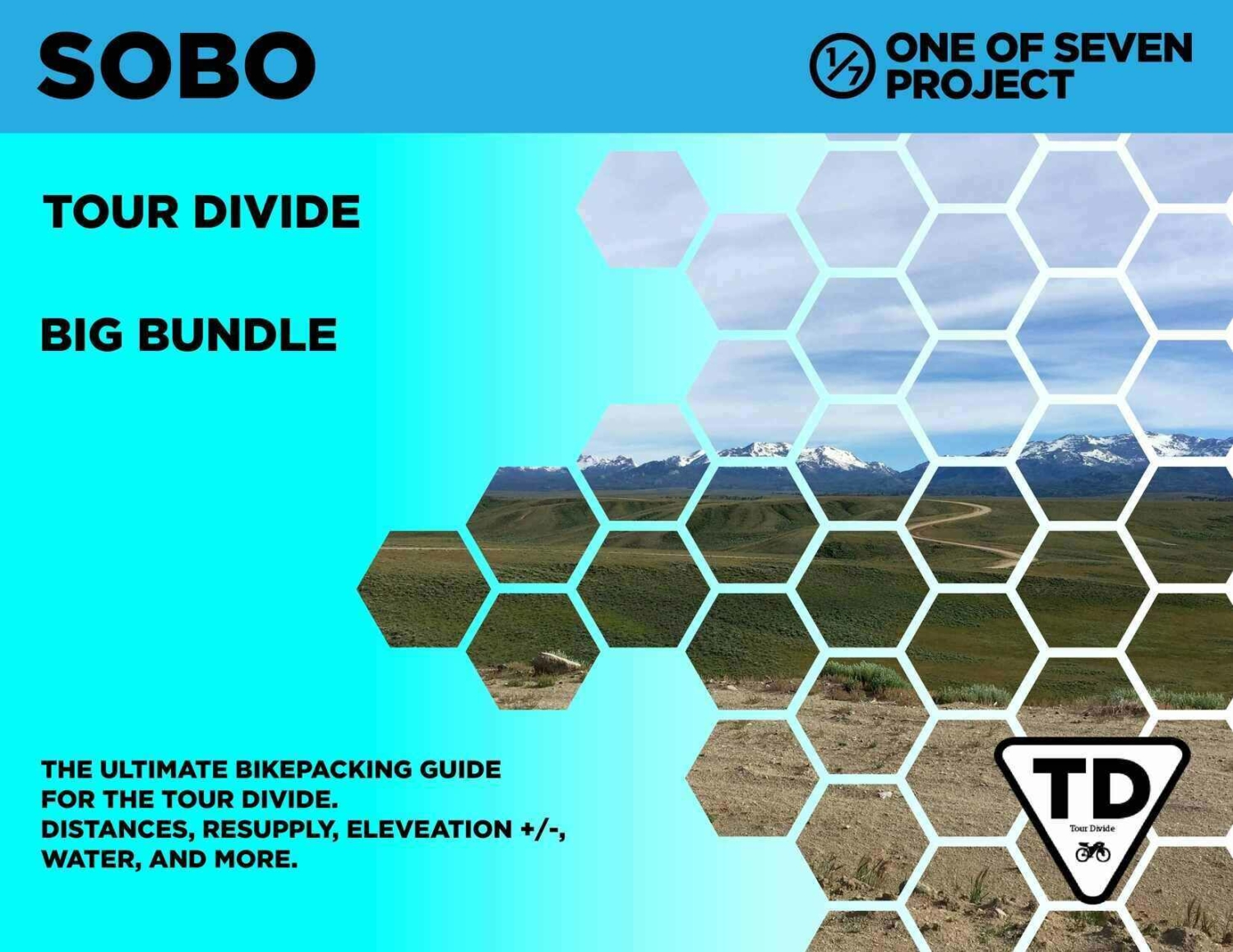
One package including all of our planning aids.
- Mileage Chart
- Elevation Gain Chart
Available in both SOBO and NOBO versions, as well as both US Standard and Metric units.
Small Bundle – $40.00 + tax (CO only) *You save $10 when you bundle!
Big Bundle – $60.00 + tax (CO only) *You save $20 when you bundle!
If you’re looking to ride the ACA’s GDMBR from Jasper to Antelope Wells you can find it here .
DATA SHEETS / TOWN LISTS
Data sheets:, town lists:.
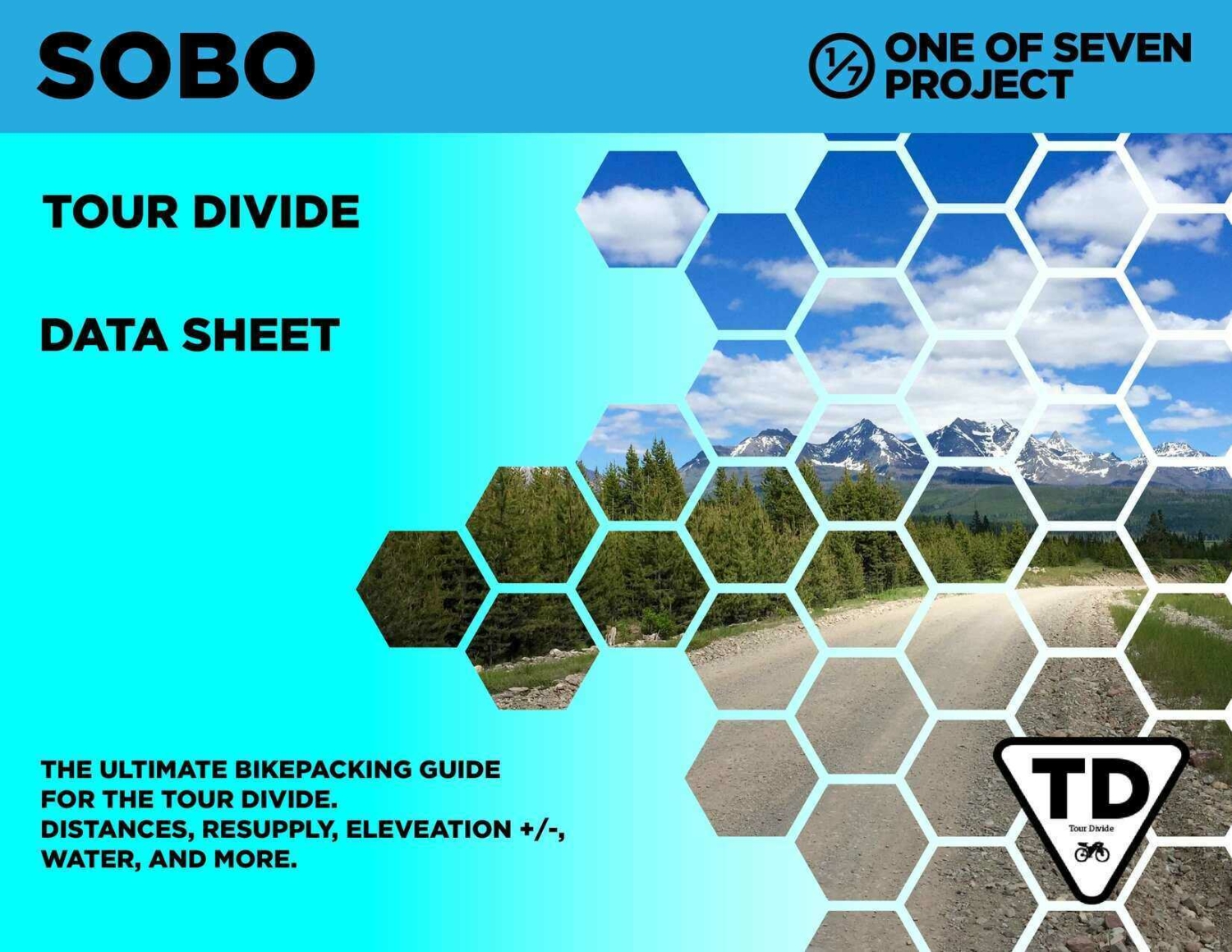
Gives you the most information of any planning aid.
- Elevation / Pop of POI.
- Mileage numbers.
- Distance to next.
- Elevation +/-.
- Max & Min. elevation between POI.
- Pavement sections.
- Key water sources.
- Shows bike shops.
- Resupply options.
- Important notes.
- Elevation profile.
- Finish Target Times.
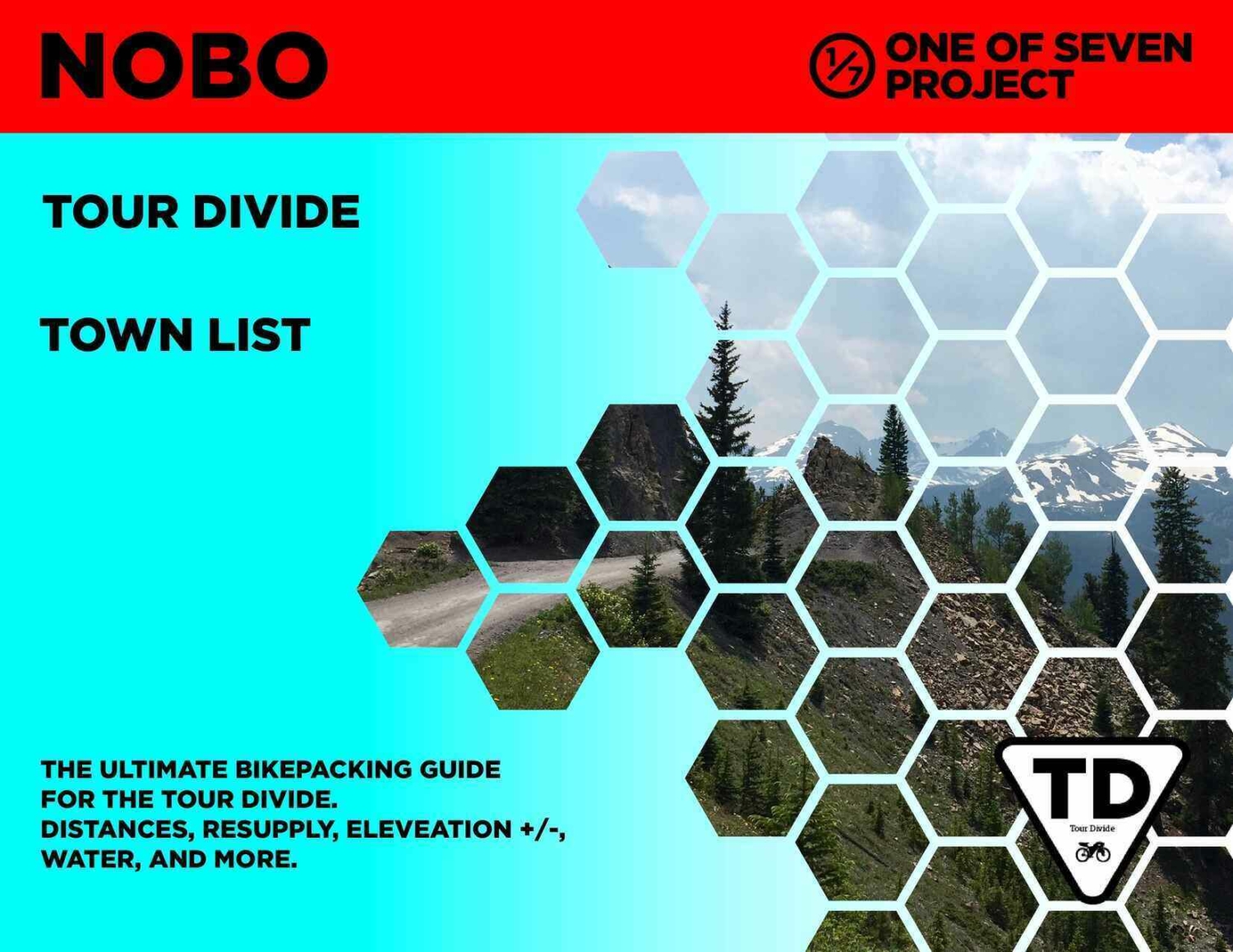
Similar to the Data Sheet, with slightly less information, but displayed showing cumulative mileage and elevation gain.
- Distance on/off trail.
- Important notes about POI.
- Cumulative distances to up coming POI.
- Elevation Gain to reach up coming POI.
- Finish Target Times added.
Data Sheet ONLY available in SOBO version, as well as both US Standard and Metric units.
Town Lists are ONLY available as part of the Small or Big Bundles.
Data Sheet – $25 + Tax (CO only)
MILEAGE / ELEVATION GAIN CHARTS
Mileage charts:, elevation gain charts:.
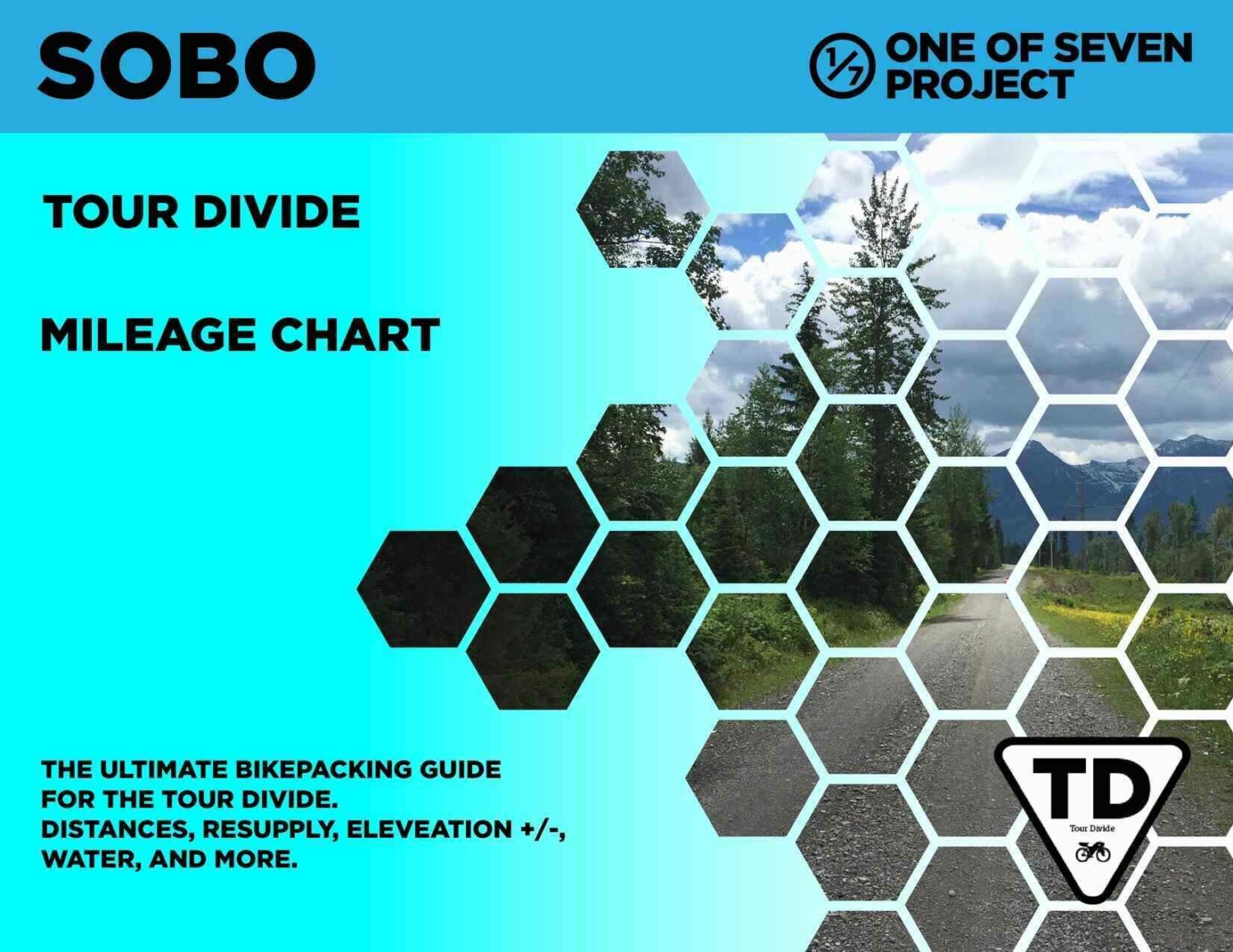
Quickly find the total mileage between any two POI along the route.
- Works for both directions.
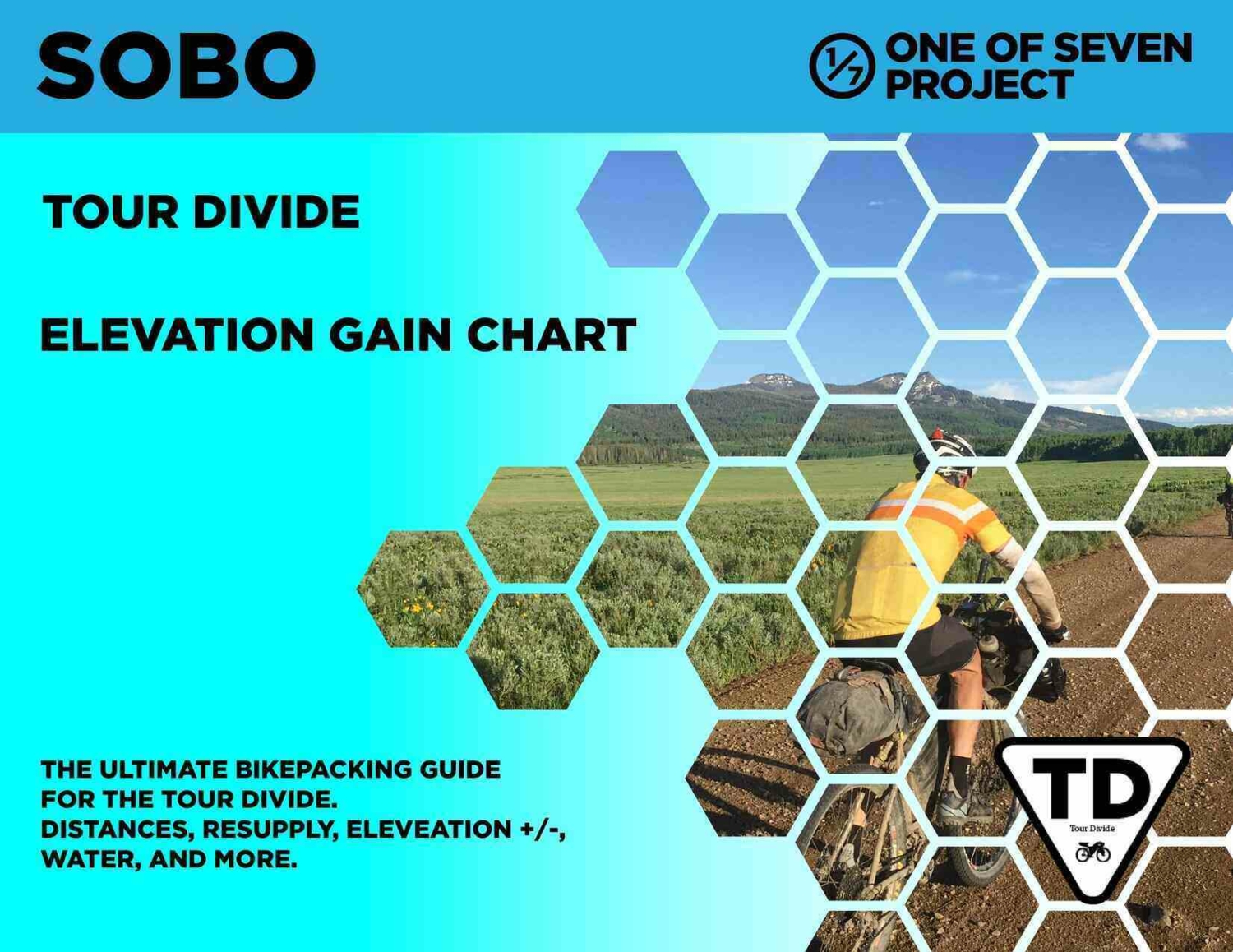
The Mileage and Elevation Gain Charts are ONLY available as part of the Big Bundle.
STEP 4: SETTING UP A RESUPPLY / ITINERARY SCHEDULE
Both racers and those touring should consider making an itinerary before tackling the Tour Divide. While an itinerary may be less critical for racers, it still provides a valuable guide to keep you on track. Anyone racing who claims they don’t have a target finish time is likely not being truthful. Your itinerary will help you achieve that goal and ensure you catch your flight home.
In my post, “ Bikepacking: Pre-Trip Considerations ,” I delve deeper into creating itineraries and what factors to consider. The post also covers general planning, gear, health and personal considerations, and electronics. Additionally, it offers suggestions for post-trip planning.
Be sure to check out our Tour Divide Guide for maps, profiles, and road surfaces to assist in creating your itinerary.
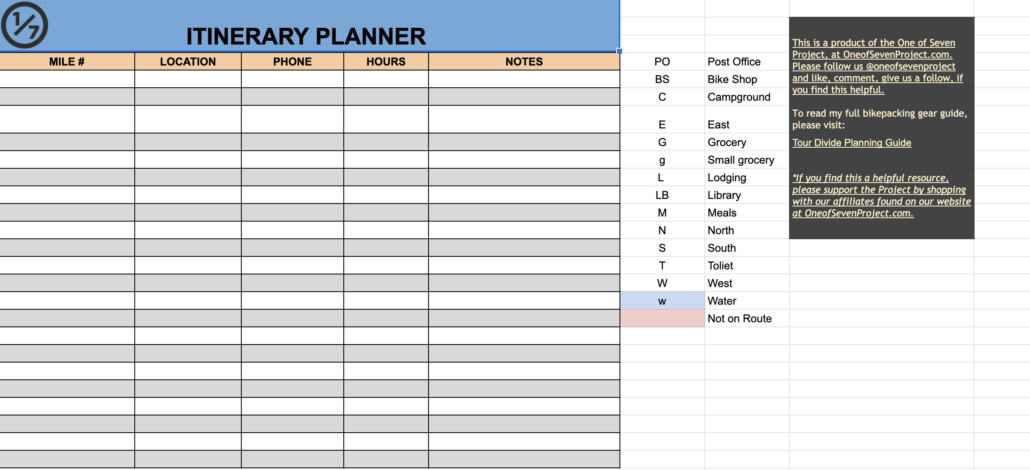
This spreed sheet is available on Google Docs , Please go to “Edit”, then select, ” Copy”. When pasting use Control(Command) – Shift – Paste or it won’t work. You’ll have to adjust column sizes. Then make all the changes you like! Happy planning and trails.
List your target day and time on your resupply/itinerary page. Think about adding some other check points, that way you can keep on target.
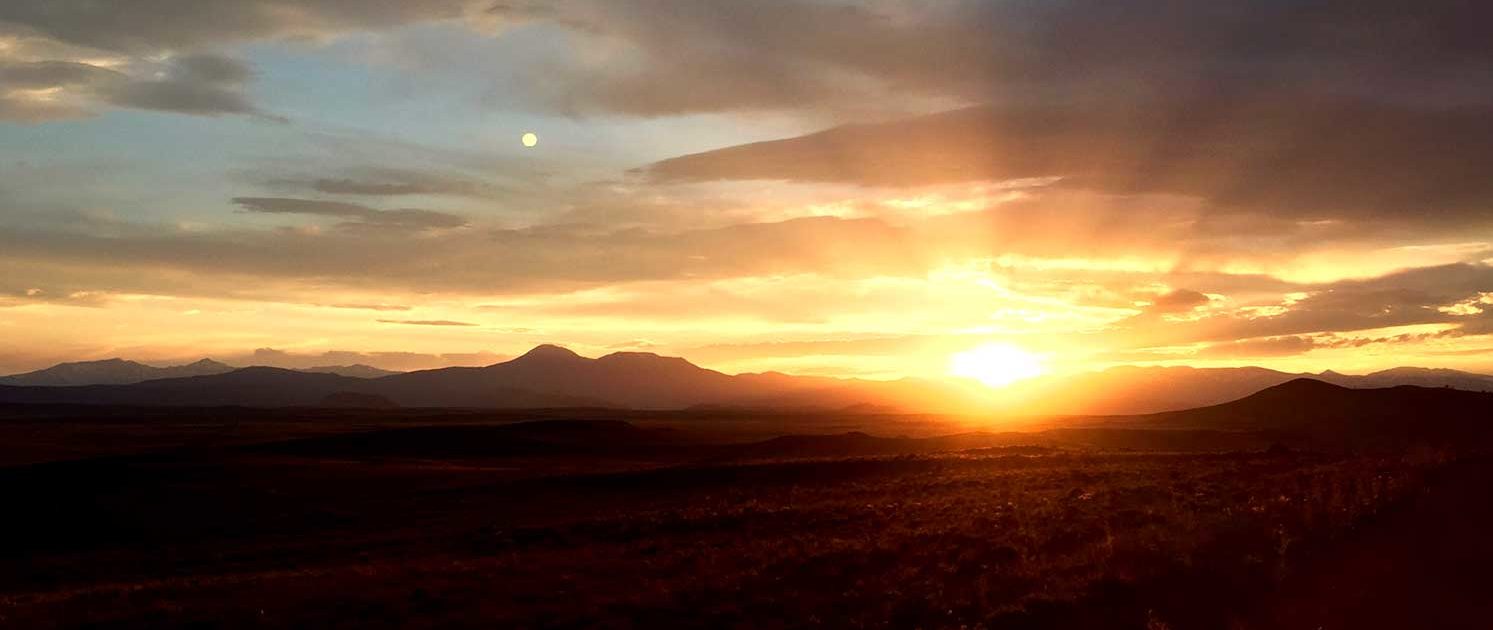
STEP 5: GEAR
Choosing the right gear is crucial before embarking on the trail. Depending on your pace, you could spend two weeks or more on the Divide, encountering every type of weather imaginable. With countless hours in the saddle, it’s essential to have gear that is reliable, thoroughly tested, and comfortable. Be sure that you thoroughly test your set up with multiple Shakedown Rides .
I’ve compiled a comprehensive page detailing the gear I used for the Tour Divide, as well as the Colorado Trail and Arizona Trail. My most recent post updates this list with gear recommendations if I were to tackle the Tour Divide again. It includes tips, what worked and didn’t, and what I would do differently next time.
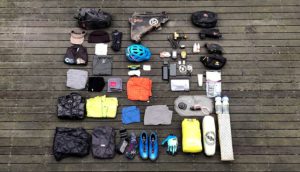
STEP 6: TRAINING
When preparing for a race or tour as demanding as the Tour Divide, training goes beyond just physical conditioning. As the old adage goes, “It’s 90% mental and 10% physical.” To tackle the TD, you’ll need to focus on both physical endurance and mental resilience.
Everyone’s training approach is unique, so the list below is just a foundation to start with. It’s based on my own experience, highlighting what made the Tour Divide challenging for me and how you can prepare effectively.
Here’s how to get ready:
- Build Endurance: Focus on long rides to mimic the sustained effort required. Aim for back-to-back long rides on weekends, gradually increasing your mileage. Incorporate multi-day rides to simulate the back-to-back days of cycling.
- Strengthen Your Core: A strong core is crucial for handling rough terrain and long hours in the saddle. Include exercises like planks, Russian twists, and leg raises in your routine.I signed up for a conditioning class and it was the best decision I made pre-race.
- Ride on Similar Terrain: Train on trails and rugged terrain that resembles the Divide’s conditions. This helps you adapt to the technical aspects, improves your bike handling skills, and will toughen you up.
- Practice Bikepacking: Get accustomed to riding with a loaded bike. Practice with the gear you plan to use, ensuring your setup is comfortable and functional over long distances. Practice packing and unpacking, and get efficient at both, it will save you a lot of time and teach you what works and what doesn’t.
- Nutrition and Hydration: Experiment with different foods and hydration strategies during training to find what works best for you. Proper fueling is key to maintaining energy and stamina. Remember that you might be resupply from gas stations or small camp stores. Learn how to find the nutrition your body needs from these kinds of locations.
- Mental Preparation: The Tour Divide is as much a mental challenge as a physical one. Train your mind by setting small goals, managing discomfort, and developing strategies to stay motivated during tough stretches.
- Rest and Recovery: Incorporate rest days and recovery periods into your training plan to avoid burnout and injuries. Listen to your body and allow time for adequate recovery.
By focusing on these key areas, you’ll build the endurance, strength, and mental resilience needed to tackle the Tour Divide successfully.
Tour Divide Rider Survey
The Project conducts an ongoing rider survey to assist new riders in selecting the right gear for the Tour Divide. Embarking on an adventure like the Tour Divide can be daunting, and the planning process overwhelming. We hope this survey will aid new riders in their preparation and execution of their Tour Divide ride, ensuring they are better equipped for their adventure.
If you haven’t taken the Tour Divide Rider Survey yet, we encourage you to participate through the links below.
***Please pay close attention to the examples provided for questions requiring typed answers. If responses are not entered exactly as shown in the examples, I will need to correct them, which can skew the results. Thank you in advance!
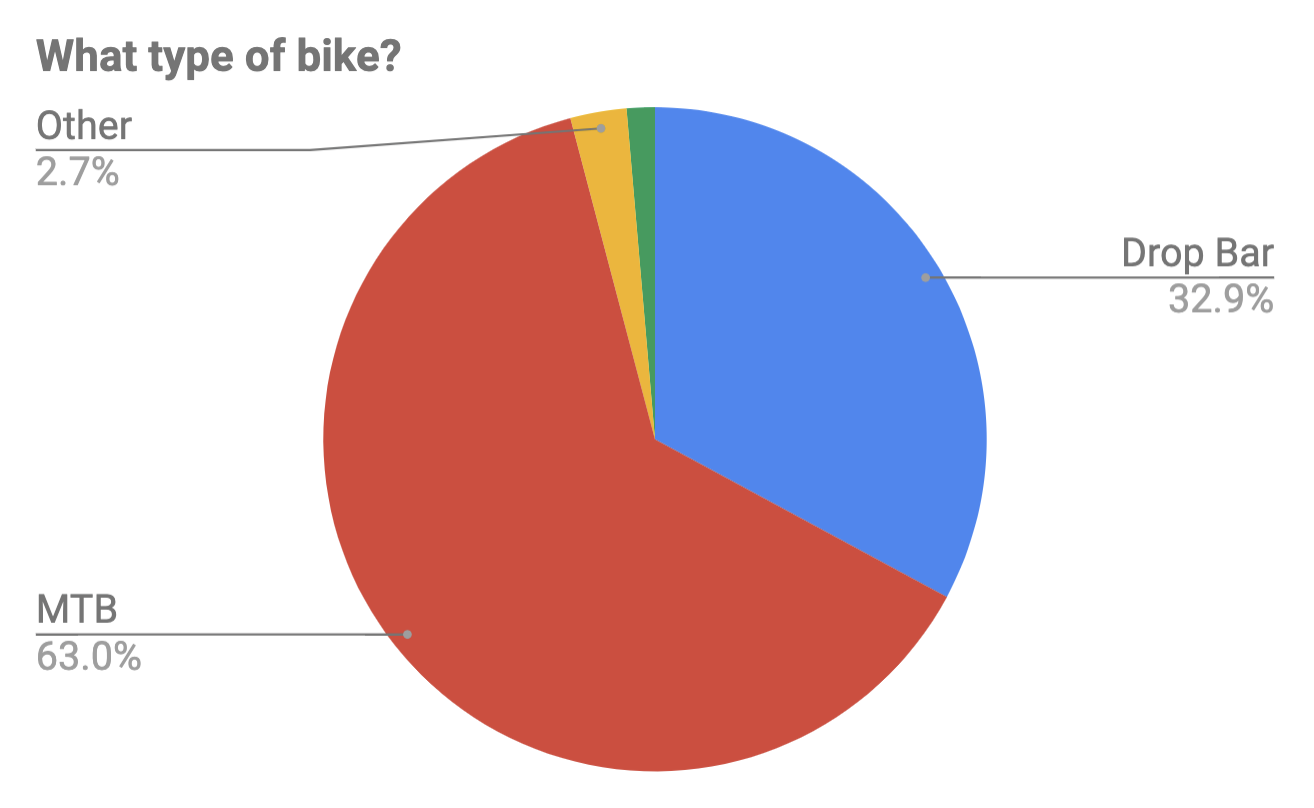
Covers: bikes, suspension, tires & wheels, drivetrain, and Components.
Covers: navigation planning, camping, logistic/travel, clothes, and more.
STEP 7: Do a Shakedown Ride
Testing your setup is crucial. Don’t assume that just packing your gear and checking the tightness will suffice. Take your loaded bike out for a ride. This will help you understand how it handles, identify any rattles or rubs, and, most importantly, discover what doesn’t work.
An untested setup can lead to unnecessary stress during your race or tour. Invest time in a thorough Shakedown Ride to eliminate potential issues and become accustomed to riding with a loaded bike.
Consider these tips when testing your setup:
- Iterate and Adjust: Perfection doesn’t come on the first try. Experiment with different configurations to find what works best for you.
- Balance Your Load: Ensure your gear is evenly distributed to maintain stability and control.
- Address Uncertainties: If you’re unsure whether a component or setup will work, resolve these doubts before heading out.
- Test Electronics: Thoroughly check your GPS and other electronics to ensure they function reliably. Know how to trouble shoot issues that might arise.
- Secure Bottles: Bottles mounted on forks and down tubes are prone to falling off and rubbing. Verify that they’re securely attached to avoid losing essential water-carrying capacity.
By thoroughly testing and refining your setup, you’ll be better prepared for the challenges ahead.
More Helpful TD Resources
Everything you need to plan a bikepacking trip on the Tour Divide.
MY PROVEN GEAR LISTS FROM THE TRIPLE CROWN
Tour divide.
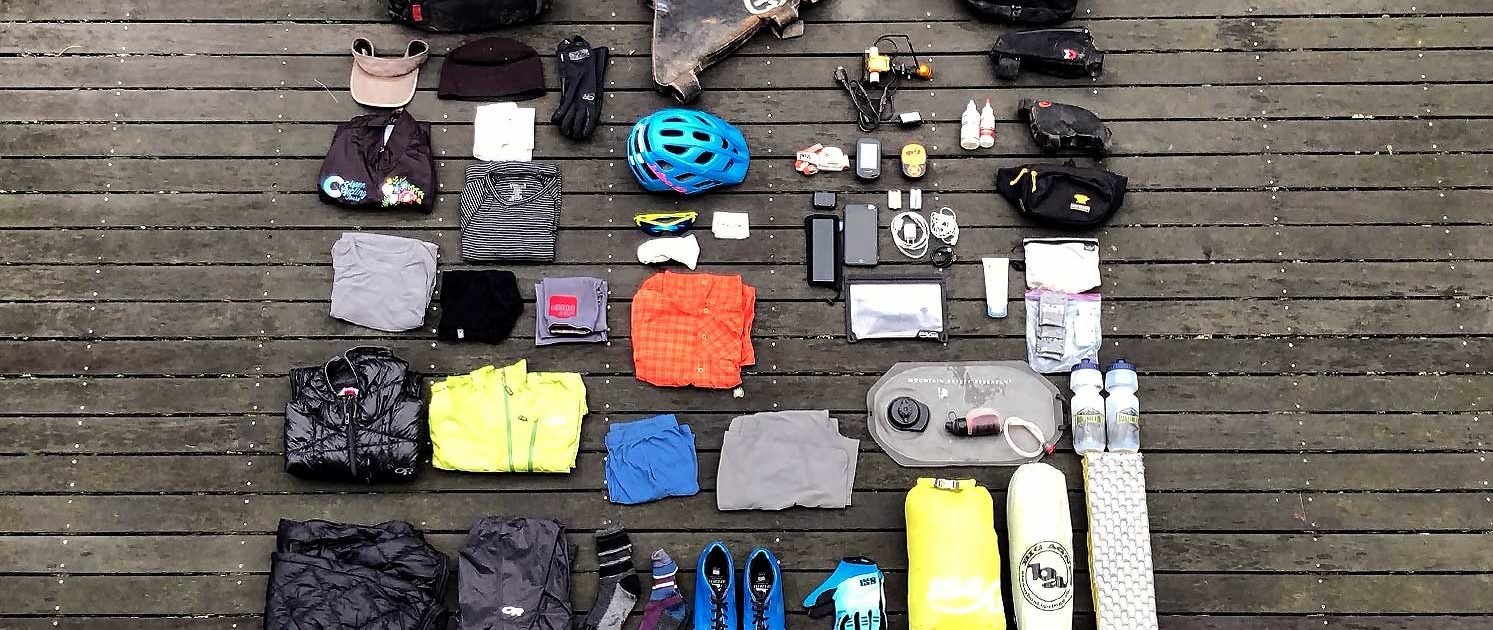
A detailed look at what I used on the Tour Divide, what worked and what didn’t.
“ IF I RODE… ” SERIES
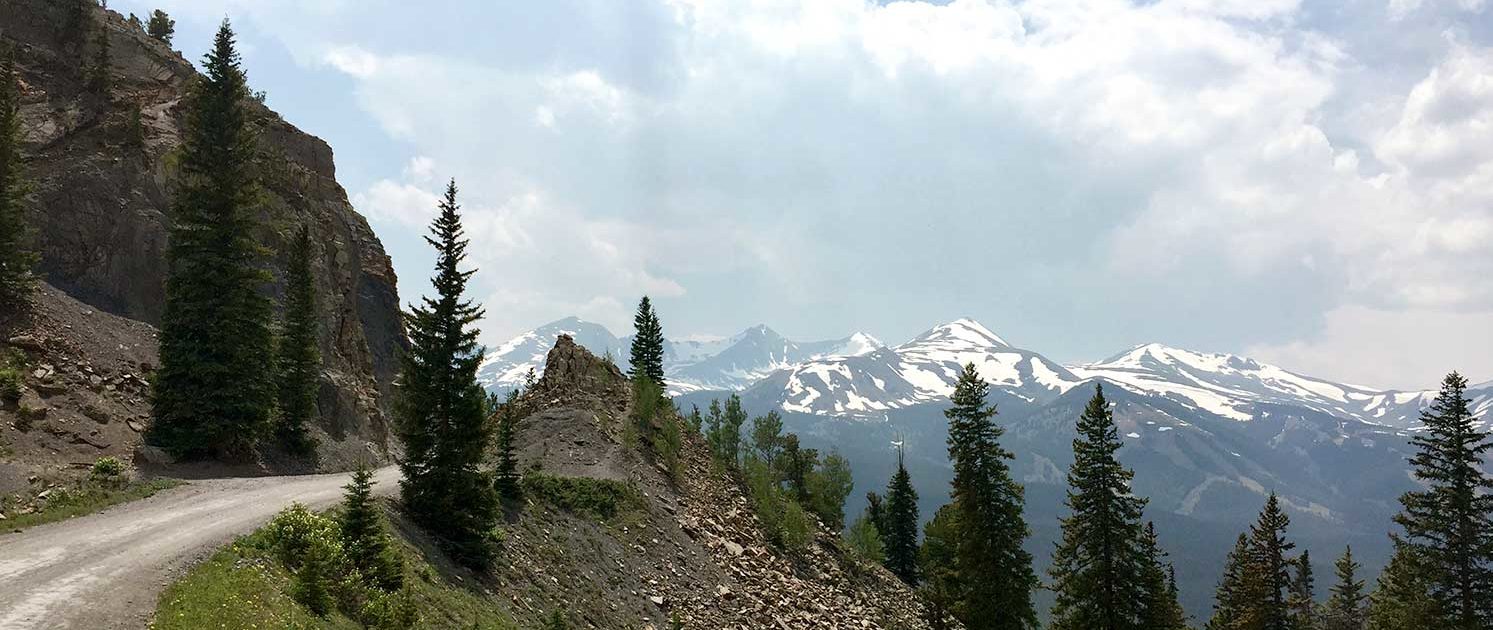
In depth look at what I would bring for gear and why, if I rode the Tour Divide again.
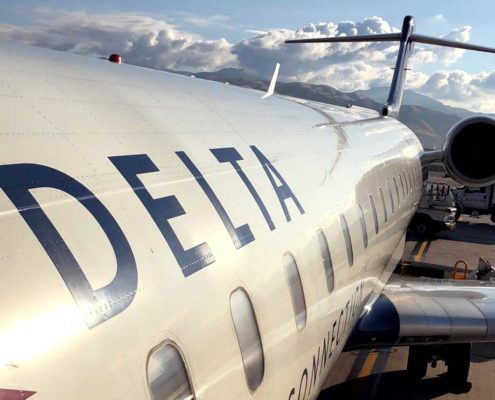
Your Ultimate Tour Divide Transportation Guide: Passports, Airports, And More
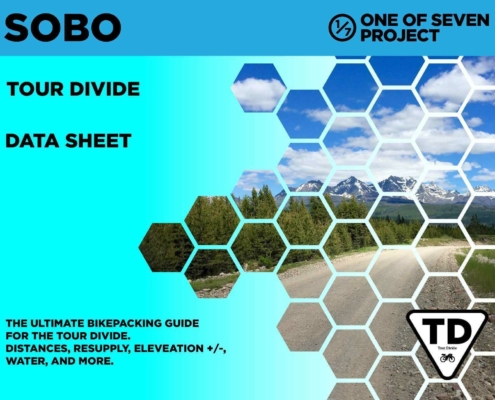
Ultimate Tour Divide Planning Aids: Resupply, Mileage, and More
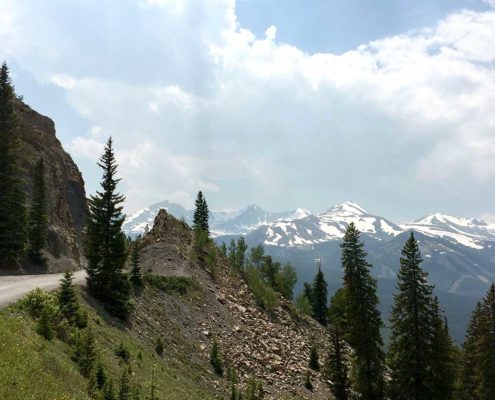
Tour Divide Gear: What Worked Well and What’s Even Better
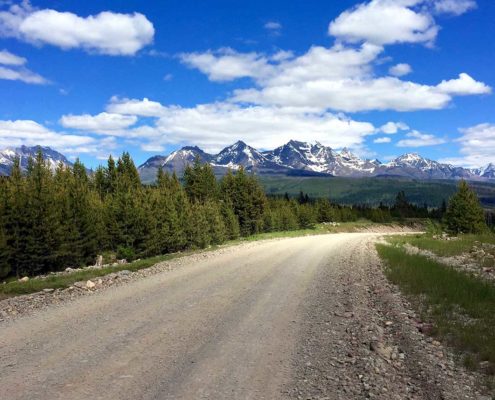
Ultimate Resupply Strategy for an Epic Tour Divide
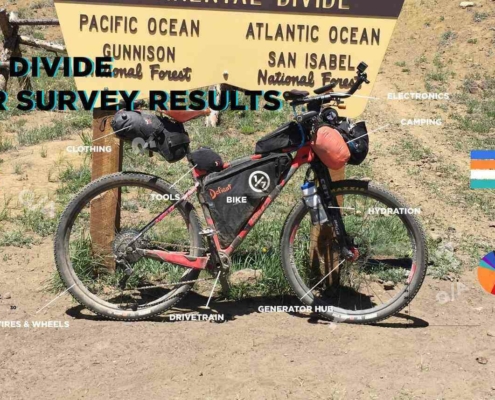
Tour Divide Survey: Essential Gear Insights for New Riders
Checkout our bikepacking resource page for more planning help., checkout all our guides.
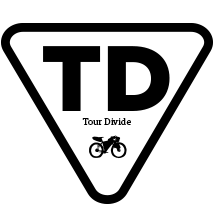
Support the Project
Simply clicking on the links below with our affiliates supports the Project.

Our Thoughts on Getting Outside
Leave no trace principles, recreate responsibly.

Touring the Great Divide Mountain Bike Route vs. Racing the Tour Divide
Riding the Great Divide Mountain Bike Route (GDMBR) or racing the Tour Divide is a rite of passage for many bikepackers; it’s seen as the “Big One” in North America. Stretching 2,745 miles from Banff, Alberta to Antelope Wells, New Mexico, it loosely follows the Continental Divide through the Rocky Mountains on a series of dirt and paved roads. The fastest men can complete the route in under 14 days, while most people who tour it take six to ten weeks.
In 2018, I had the opportunity to tour the Great Divide Mountain Bike Route (GDMBR) with my husband Andrew Strempke. While we initially were attracted to racing, the rules of the event require solo, self-supported travel, and we wanted to ride together. And so we did, completing the route in 25 days. Four years later, in 2022, we both lined up to race the Tour Divide with the intention of completing the route within the constraints provided by the event. While we weren’t going to go out of our way to avoid seeing each other out on the route, the reality was that unless something went very wrong for Andrew, the chances of us riding near each other was fairly minimal.
Touring versus racing the route yielded two vastly different experiences. Racing tends to be more glorified by other people, but touring was just as satisfying, and in 2018, I believe it was the better choice for me at the time. There are benefits and drawbacks to each style of trip, and I feel lucky to have been able to experience both.
Rules, What Rules?
While the Great Divide Mountain Bike Route is open for anyone to ride under any style, signing up for Tour Divide means that you’re agreeing to pedal your bike from Banff to Antelope Wells in a self-supported solo fashion following the route mile for mile. On the other hand, touring provides the freedom to accept assistance from anyone, to share gear with as many people as you want, ride as fast or slow as you desire, and to detour around impassable roads or sections of the route that you’d rather not ride.
Touring: There are no rules! Choose your own adventure! The biggest determining factor that caused Andrew and I to choose touring over racing in 2018 was the Tour Divide’s rules about riding solo and self supported. Completing the route together was more important to use than officially completing Tour Divide. Andrew and I rode side by side the whole time, supported each other during low points, and kept each other entertained. We split gear to lighten our loads and deviated from the route a couple of times when following the route would have meant pushing through hours of mud, something we preferred to avoid whenever possible. We did want to complete our tour under our own power, so we didn’t ever get into a vehicle with the exception of a short road section that was under construction. The workers required us to take the pilot car until the end of the one-lane section of road. There was no one to question whether taking that ride in the pilot car invalidated our ride.
Racing: When I signed up for the Tour Divide, I agreed to abide by the rules of the race. There aren’t many, but the gist is that you agree to follow the entirety of the route in a solo self-supported fashion. With so much rain this year, making a turn onto a road I knew would be a sloppy mess when there was a perfectly good paved road that parallels the route was a bummer at times. That being said, knowing I was following the same route as all the racers, facing and overcoming similar challenges, and finding ways to make it through challenging conditions was rewarding in the end.
Riding self-supported also means carrying your own gear. When my dynamo light broke and I knew I’d have to spend more time charging electronics in towns, another racer offered me his extra battery pack and a light. While racer-to-racer support is typically tolerated, this definitely felt like a gray area and seemed a lot like sharing gear, so I chose to decline the offer, even though it would have saved me time.
Following the rules challenged me to solve my own problems and be mentally flexible when unexpected issues arose, which helped me to grow in my confidence as a bikepacker and solo woman traveler.
Counting Grams, Optimizing for Safety
The main difference in my gear between racing and touring was due to the fact that I couldn’t split the load with anyone during the race. Since I was going solo, it was important to maintain all of my own gear. I also had to be confident in using everything I carried. I wouldn’t have Andrew’s light or utensil or jacket if something happened to mine.
Touring: As we prepared for our tour, we decided we wanted to go light. We went with a minimal setup with no stove, no extra camp clothes, and one set of riding clothes. We split tools, a first-aid kit, and a two-person tent. Since we were on a 30-day timeline for our trip, including travel to and from the start, we had to cover ground quickly, and minimizing the weight on our bikes made a significant difference in the speed we could travel. The fact that we were able to share gear meant my load was actually lighter on the tour than it was racing.
Racing: When choosing gear for a race effort, it’s always a balance of being as light as possible while still being as safe as possible. I made some gear changes based on what I learned from the tour and my additional bikepacking experience. On the 2018 tour, I brought a 30-degree quilt and a foam pad and found myself too cold a few nights. For the race, I upgraded to a 25-degree sleeping bag and an insulated air pad. This setup actually ended up being too warm for most of the race and I woke up several nights in a puddle of sweat and drool, but it gave me confidence that I would be warm despite the wet and cold weather. I also brought more substantial rain gear after getting rained on during our tour in 2018 and finding that ultralight rain gear just doesn’t keep me warm or dry enough. I also chose to use a synthetic puffy rather than a down puffy. Synthetic insulation stays warm when it’s wet and down does not, but it also doesn’t compress nearly as effectively. I anticipated being soggy from rain or sweat for at least part of the ride, so the trade-off was worth it. I made sure all my tools worked and that I knew how to use them to fix common mechanicals.
Optimized for Speed…or Enjoyment
When people hear “touring,” they tend to automatically think you’re going slow and bringing the kitchen sink. That wasn’t the style of tour we were interested in, though plenty of people do that too. During our tour, we rode fast, but took it slow in towns to eat lots of food and get plenty of rest. In the end, my race pace was several days faster, not necessarily because I actually rode faster, but mostly because I just rode longer and stopped for as little time as possible, rushing through resupplies and meals.
Touring: Andrew and I completed our tour in 25 days, which is a pretty quick pace for a non-race effort. It felt good to challenge my body to go hard and cover ground quickly. I loved riding my bike all day and anyhow, we were on a timeline. Despite having a deadline to be back, not having the pressure of racing allowed us to slow down without guilt. One of our favorite stops during the trip was the Llama Ranch in Montana. We arrived in the afternoon and spent the rest of the day visiting with the owners Barbara and John rather than pushing on until dark. Later in the route, we stopped at Brush Mountain Lodge for several hours in the middle of the day where we ate pizza and drank beer, sitting and chatting for a few hours before continuing along the route. Being able to stop and spend time with Kirsten, who runs Brush Mountain Lodge was special, and she has become one of our best friends since then. Even though our tour took longer than the race for me, it was certainly not easy. No matter the pace, the Divide route will kick your ass some days.
Racing: My finish time during the race was 19 days and 16 hours. I probably didn’t actually ride much faster, but I rode longer each day and minimized stop time to complete the route in less time. Optimizing stop time and systems is one of my favorite parts of racing. It feels like free speed when you can get in and out of town or set up and tear down camp efficiently. I’ve tried to figure out exactly why I like bikepack racing and I honestly don’t have a great answer. I love challenging my body and the camaraderie of the other racers. I like making decisions under pressure and being forced to rely on myself to solve problems. Crossing a finish line knowing that I used my body and brain to the best of my ability to traverse an established route as fast as I could is a rewarding feeling.
Following The Route…Or Not
The Tour Divide route and the Great Divide Mountain Bike Route have some minor differences. When we were touring, we followed whichever one made sense at the time and deviated a few times when it made sense. When I chose to race, following the Tour Divide route mile for mile was required.
Touring: Making route choices was something extra we had to think about on our tour. We had the freedom to choose where we’d ride, but we also had to take responsibility for those choices if things didn’t work out. Our first detour from the Tour Divide route was around the hours-long hike-a-bike up Koko Claims in British Columbia, Canada. We had done zero hike-a-bike training and figured the risk of injury using untrained muscles wasn’t worth it. We talked to a local mechanic in Banff and he confirmed that going through Sparwood was a better choice for us and even gave us recommendations to take some new singletrack that paralleled the Great Divide Route. We had a blast on that section of trail and when we rejoined the route in Fernie, we saw racers with mud-covered bikes and bodies. Andrew and I looked at each other and agreed that we made the right call.
We didn’t escape every opportunity to hike through mud, though. Our longest mud stretch was on the legendary Bannack Road. We hiked for miles with our bikes on our shoulders or backs when rolling our bikes meant the tires collected mud and became bogged down in seconds. After encountering another rider at an intersection who told us the next section “was like something out of a nightmare” with more mud, it was an easy decision to take a paved short-cut into Lima. We agreed that detouring around long hike-a-bike sections with mud would help us maintain our sanity and have more fun on our trip. Detouring around spots that promised only suffering and misery didn’t make me feel any less like a route finisher at the end, but it definitely made for a more fun experience. I felt successful just getting from Banff to Antelope Wells under my own power.
Racing: To be a Tour Divide finisher, I was required to follow the published race route exactly. The times I went off route for supplies, I had to re-enter the route at the same point I left it. A wrong turn meant I would need to go back from where I deviated from the route to correct the mistake. When it was raining going over Togwotee Pass, I had to make the turn onto the notoriously muddy Brooks Lake Road to hike and ride through slop and snow instead of detouring on the paved road that paralleled it. When I’d toured the route, I’d taken the detour, so I knew exactly how nice the pavement was while I was trudging along at a mile an hour.
Participating in the race made route decisions easy. I just followed the line on my GPS and hiked when I needed to. If I wanted to finish, I had to stay on route. Since detouring around slow or potentially dangerous situations wasn’t an option, I also had to consider weather forecasts and my timing carefully.
During the tour, we didn’t really care how long resupply stops took. We typically sat down for a meal in a restaurant at least once a day and drank local beers. While I was racing, efficient resupplies were important. Limiting stop time is free speed and since I was demanding so much of my body, I didn’t drink beer along the way.
Touring: On our tour, we ate well and neither of us lost weight. Missing restaurant or grocery store hours didn’t mean we needed to keep moving to the next stop or eat a gas station burrito for dinner, we could just… wait. The pace of our resupplies was relaxed. We often took two-hour lunch breaks at restaurants and leisurely walked down the aisles of a grocery store or gas station until we had everything we needed. Salida became one of my favorite towns on the route after eating a huge barbecue Hawaiian pizza and salad at Moonlight Pizza and Brewpub. We slept in a hostel there and stayed up late talking with Continental Divide Trail hikers and other travelers. Our huge meals at cafes and conversations with both locals and other bike tourers added to our experience and gave us a flavor of the communities we were passing through.
Racing: Logistics and efficiency can be an interesting puzzle to figure out during a bikepacking race. Riding later into the night meant that hitting towns during business hours was more challenging. Before the race, I studied the towns and added business hours to a spreadsheet. I was aware of the times I might need to stock up on more food if I was going to potentially miss the next resupply.
When I was a few miles from a town, I would pull up my spreadsheet where I had calculated the distance, estimated time, and estimated calories needed to get to the next stop. I would start making a list in my head of the foods I wanted to get. “Potato chips, candy bars, some kind of gummy candy, pastries, burritos.” You know, all kinds of healthy stuff. I would run over that list in my head, picturing where I might find those things in the gas station or grocery store I was headed to. When I arrived at the stop, I would immediately start looking for an outlet if I needed to charge my electronics, then I would go into the store with my phone calculator in hand. I would walk down the aisles putting food into my basket, adding up the calories until I had enough. Then I would focus on the meal I wanted to eat right then. Normally a vegetarian, I made some exceptions to my normal diet, eating chicken at times when I couldn’t find another good protein source in a gas station.
I ate while I packed up my bike instead of sitting down at a restaurant with one exception. I arrived in Sargents, Colorado, feeling nostalgic. It’s where the Western Express ACA Route crosses the Great Divide Mountain Bike Route. Having been there with Andrew both on our cross-country tour in 2012 and our 2018 tour got me all sappy and I felt like I needed to sit down, reset, and get some real food in me.
Companionship or Solitude
I feel lucky to have shared the Great Divide Mountain Bike Route with Andrew. We made countless memories that we still reflect on today. During the race, I found companionship, but my time with other racers was brief and I spent most of the ride by myself. This might sound lonely, but I also really value alone time and moments spent by myself in beautiful places can be equally as moving for me as moments in those places with another person.
Touring: Andrew and I rode the entire route side by side. It was really special to have shared the experience with the most important person in my life. We were in tune with each other’s needs, moods, and when to provide a gentle reminder that maybe the other needs a snack. When conditions were tough, we kept each other’s minds busy by playing 20 questions. We made decisions as a team about where to stop for food and where to camp for the night. We had both of our brains to deal with mechanicals and make decisions about any reroutes.
In general, riding together tends to be slower. You’re going whatever pace the slowest person at the time is going and end up taking more breaks since you’re dealing with two people’s needs. We typically rode about the same pace and if one of us needed a break, the other was patient. We both wanted the other to feel good and enjoy the ride.
Andrew and I are fortunate that we get along really well, but we did have our moments. I know that Andrew was pretty upset with me when I lost my rain jacket on a rough descent one day just before sunset. (I have since learned that everything that I want to keep goes in a zipper pocket). He sprinted back up the road to go find it while I rode much more slowly behind him. Fortunately a kind racer picked it up so he didn’t have to ride too far up the climb. Then there was the time when Andrew insisted on taking photos of the Montana/Idaho border sign in a thunderstorm. As someone who hates thunderstorms, all I wanted to do was ride down the pass and became increasingly frustrated as Andrew insisted on taking several selfies.
Racing:
While the Tour Divide is set up to be ridden solo, many racers end up forming small groups to ride with. While I rode mostly alone, I did have some time riding alongside other racers, typically for a short time. I would see other racers in towns and when we took breaks. Spending time with people briefly once a day was enough social interaction to keep me sane. I’m a pretty introverted and independent person. Extensive alone time doesn’t bother me and is something I look forward to. Still, every time I would run into my good friend and fellow racer Zack, who was also on a singlespeed, we would chat and share a few miles. The emotional boost provided by those interactions was undeniable.
Andrew was also racing the Tour Divide this year. We anticipated not seeing each other unless something went wrong for him. We agreed not to communicate about the race at all while we were out there. We sent a few voice memos with funny stories. I told him about the time I ate jalapeño chips and they went down the wrong pipe and I gave myself a bloody nose coughing them back up. We promised to not say, “I miss you,” because it just makes us both sad. But I did miss him, and being alone definitely reminded me how much I love Andrew, my friends, and my family.
One of the hardest moments during my race was leaving Brush Mountain Lodge. Kirsten wasn’t planning to be there during the race, but she was. I had already stopped in Savery just 15 miles down the hill for an hour, so I didn’t have more time to spare to spend time with her and my good friend, Jolly, who was helping at the lodge. I left in tears, wishing I could have stayed. I was comforted by the thought that I could come back to the lodge after I was finished.
Traveling solo meant that I generally had to deal with my fears alone, but after a particularly scary lightning experience outside of Pie Town, I was glad to be able to decompress with other bikepackers and hikers at the Toaster House in Pie Town. Just a few miles out of town, I’d felt electricity running through both of my hands through my handlebars and jumped off my bike and got under a small clump of juniper trees. I set up my tarp to stay dry and sat in the lightning position until the storm passed. I was pretty hysterical. After that, I decided to stay at the Toaster House in Pie Town. I felt like I needed indoor accommodations and to talk to other humans to feel okay to go back out into the elements the next day. Jefferson, the host, made a hot meal for me, the other bike tourers, and the CDT hiker staying there. I spent a lot more time talking with them than I normally would have during a race. Talking about our experiences on the route and what life is like outside of bike touring and racing helped me to reset and calm down.
Outside of the emotional support of companionship, I had to be confident in my ability to fix my bike, make good choices in a fatigued state, and be safe on my own. I haven’t always felt confident bikepacking solo, but as I’ve gained more experience I’ve become more comfortable. One of the only times I felt weird being alone is when I saw a man on the side of the trail who was loading a gun. He asked, “Are you alone?” I went ahead and told him that there are other riders right behind me, which is my typical answer for any man who asks me that question.
Sharing the Experience
I wanted to document both our tour and my race. It’s so easy to forget little details if you don’t record or write them down. Documentation takes extra effort, but I’m happy that I did it during both trips.
Touring: On our tour, I laid in my sleeping bag and typed out a blog post with pictures from my phone every night so that our friends and family could follow along, and now I can look back and remember something from each day of the tour. Andrew also took an action camera and made a video about our trip. I found that we were less likely to record our low moments riding together since it’s a bit rude to put a camera in your partner’s face when they’re having a bad time.
Racing: Documenting my race was important to me. I carried a GoPro and posted occasional Instagram stories. Race documentation by outside media crews during the Tour Divide has been met with controversy in recent years, so aside from wanting the footage for myself, I wanted to show that there is a self-supported way to tell my story. My Instagram stories and GoPro footage is certainly not as beautiful as a professionally documented film, but it’s raw and I like it that way. Most of my documentation was done while I was pedaling, and I put together the GoPro footage when I was recovering after the race.
It’s interesting to think about the ethics of posting on social media in the context of self-supported racing. I inevitably got encouraging messages whenever I posted. Knowing that my friends were watching definitely made me want to continue to ride my best. Ultimately I decided that since people generally have access to a smart phone with social media, I wasn’t giving myself an unfair advantage by posting on Instagram. Some may disagree, but I feel good about what I chose to do during the race. I was intentional about my posts as to not solicit advice or support from other people and maintain the self-supported nature of the ride.
Romance, or Lack Thereof, of Camping
For a lot of bikepacking trips, finding a beautiful camping spot can be a highlight of the trip. When racing, I went to bed after dark and any spot was as good as the next. We put a little more intention into camp spots while touring, and I slept better during our tour knowing there was another set of ears next to me.
Touring: Andrew and I slept most nights in our two-person tent. We’d start looking for a spot to camp as sunset approached. We didn’t care so much about whether we slept somewhere scenic, but we had higher standards than when I raced. We got a couple hotel rooms when the weather was wet. I admittedly stole Andrew’s puffy jacket on nights when I was cold! We typically woke up with the sun and quit pedaling at sunset, giving us plenty of rest. We rode past dark one night in New Mexico to beat the heat which turned out to be the only time we saw a bear during the entire trip. Aside from those few miles, we saw the whole route in the daylight.
Racing: My standards for camping while racing were pretty low and I almost always rode past sunset. I didn’t mind riding in the dark since I had seen the route in the daylight before. Riding at night is a new way to experience the same place differently. I love looking up at the stars on a clear night and seeing animals who are normally sleeping during the daytime. Since I was riding more in the morning and evening, I had way more wildlife sightings during the race than during the tour. I saw several bears, one little fuzzball of a bear cub, a mountain lion, three moose during the day and three at night, countless deer and pronghorn, and a handful of other smaller animals.
When it was time to choose a spot to sleep, I made sure the location I chose was dry and not too high in elevation. If there was snow, that was a hard no. In New Mexico, the monsoons were so intense that it was difficult to find a spot that didn’t look like water was running there at some point. The worst camp spot I chose was on the side of the highway under a tree next to a bunch of garbage. It was one of the only dry-ish spots I could find.
I enjoyed indoor accommodations twice during the race, at the Llama Ranch in Montana and at the Toaster House in New Mexico. Those nights felt very luxurious. If you count pit toilets, I had a few additional nights inside in bear country. I camped with other riders for two of the nights. Aside from that, I slept under my tarp, in my bivy, by myself.
Getting to Antelope Wells
During both trips, a big goal was finishing the route. I made different decisions during both trips to meet my goals. While I was racing I had to make these decisions under pressure.
Touring: The top goal for our tour was finishing the route. While we were on a timeline, we took a couple of shorter days in the beginning while our bodies got used to pedaling long miles. It wasn’t a big deal to stop early because there was no pressure of racing. When Andrew’s Achilles tendons started to flare up a few days in and we saw a sign for a brewery in the middle of nowhere, we stopped and drank beer even though we had just taken a lunch break. This gave his ankles a much needed rest, allowed us to reflect on all the riding we’d done so far, and gave us a Montana cultural experience. Being able to make choices without the pressure of racing undoubtedly helped us make decisions that got us to Antelope Wells.
Racing: Finishing the route was also a goal for the race, but more than that, I wanted to go faster than I did during our tour. If for some reason I wasn’t able to go that pace due to body or bike issues, I probably would have considered scratching. It just wouldn’t be worth putting my body through the stress if I couldn’t meet my goal. This was definitely a change in attitude for someone who used to value finishing at all costs.
During the race, I let the speed of others dictate some of my decision making. The day I got into Colorado, I was the third woman. I was six hours behind Ana, the second woman, and 14 hours behind Zoe, the first woman. It was clear to me that I had no chance of winning without making a huge move. I thought to myself, “All I have to lose is my sleep and sanity.” That night I rode much later than I had on previous nights, slept for two hours, and got really close to Ana. But the decision to sleep so little meant I was worthless the next day. All the people riding the same pace as me before caught back up to me by the end of the day. The pressure of racing guided me toward sacrificing sleep when I should have taken better care of my body. When I found out Zoe quit that day I felt pretty dumb for letting her distance ahead of me dictate how much I slept. I re-learned the lesson that I need to take care of myself to ride strong and making decisions based on how another person is riding is usually a mistake. Had I kept riding and sleeping the way I should have, maybe I could have stayed closer to Ana in the end.
Feeling Part of Something
Humans, even the introverted ones, are all social creatures, and our brains are wired to want to be part of a community. During both trips, I felt part of a group of bikepackers riding their bikes from Banff to Antelope Wells. When we were touring, we definitely felt different than the racing group.
Touring: While we started our tour on the same day as the Grand Depart of the Tour Divide and were around racers much of the time, it felt like we were doing something different than they were. It wasn’t a positive or negative thing, just different. After finishing, I definitely felt part of a group of people who have completed the Great Divide Mountain Bike Route, and when we meet people who have accomplished this feat, we have an instant connection.
Andrew and I were fortunate to be able to help out at Brush Mountain Lodge in 2021. During that time, we talked with racers and hundreds of people touring the route. Often the tourers would say, “I’m just touring.” When I heard that, I tried to tell them that you don’t have to say “just.” I totally get it though. Andrew and I said the same thing when we were touring and people in towns asked us if we were racing. Sometimes they would treat us differently than racers. There were places with banners for only racers to sign or some people would become uninterested after they found out we were “just” touring. That wasn’t the case everywhere. Kathy from Ovando greets every bikepacker who comes through town with the same enthusiasm regardless of racing or touring status.
Racing: When I sign up for a Grand Depart event, I feel a connection to the racers around me. It helps when I’m walking through snow, riding through rain, or staying up late into the night knowing there are other people out there doing the same. I have always experienced this as a positive thing until this year. There were 15 rescues in the Canadian Flathead in the first few days of the race. There were reports of racers using hotel towels to clean their drivetrains. Later in Montana I ran into a local man trying to get home but couldn’t because photographers following the race blocked the road. When I heard about the rescues, poor manners at the hotel, and saw the behavior of the photographers, I was embarrassed to be part of the race. It made me angry that people participating in the Tour Divide were having a negative impact on the communities the route traverses. I’m hopeful that future Tour Dividers can look at this year as a learning experience and that future racers give more respect to the route, the power of Mother Nature, and the people along the route. That being said, for the majority of racers who completed the route, the challenging weather conditions this year provided an unforgettable experience and swapping stories with other racers will be something we can do for years to come.
As a woman racer, I also feel a strong connection to other women on the route. All of the racers I saw were men, though I saw several northbound touring women and always stopped to say hi and have a brief conversation, usually about the route ahead. While I didn’t see other women racers after the first day, when I got to Colorado, I did my best to chase down Ana. Ana managed to stay ahead and went on to win the women’s race, 15 hours ahead of me. Even though we never met, somehow I felt like I knew her since I traced her tracks on the trail. When I got to meet her later in the summer after she crushed the Colorado Trail Race with a second-place finish, I considered her a friend instantly.
Racing or Touring
I’m so grateful Andrew and I had the opportunity to tour the route together in 2018. We did have limited time, so it was a fast tour, but we never felt rushed and didn’t have to follow the rules of the race. We shared gear and deviated from the route when it made sense. Our resupply stops were relaxed and we ate lots of huge meals at cafes along the route. We stayed well rested and well fueled. When I thought I only had one opportunity to experience the wonder of the Great Divide Mountain Bike Route, I chose to ride it as a tour and I would 100% make that same choice again.
Racing offered a new experience of an incredible route. At the finish, I was totally depleted. I left it all out there mentally and physically. I was proud of my effort and the fact that I was able to race the route faster than I rode it before. Thinking about all of the tough times I had out there and how I was able to overcome the challenges of the weather, terrain, and my own fears made me feel confident and accomplished.
Sometimes there is more external motivation to participate in an event or race. People tend to glorify racing over touring or other creative endeavors even though each of these experiences has value. I definitely got more attention for finishing the Tour Divide as a race rather than a tour. Bikepacking.com published an article about how I was the second woman to finish the race and how I raced on a singlespeed. But, my close friends and family were just as excited when I finished my tour as when I finished the race, and those are the people who matter most.
At times touring an established route or making your own route can be more intrinsically rewarding than participating in a race. Before I choose whether to race or tour a route, I’ll consider what my body can handle, my personal goals, and my motivation. I plan to continue pursuing both racing and touring, collecting as many lessons and taking in as much beauty as I can along the way.
Your support means the world to us. If you enjoy our work, please consider making a donation to help us with our mission.
Katie Strempke
13 responses to “Touring the Great Divide Mountain Bike Route vs. Racing the Tour Divide”
Based on my dreams and ambitions, this is some of the best bike-related content I have ever had the pleasure of consuming. I would never dream of racing, but it was very interesting and useful to read about the different perspectives. If I ever had the chance to meet you, I would ask questions about mechanicals, laundry and hygiene.
Thanks for putting this together!
This is a really cool perspective. Thanks for sharing, Katie!
Thanks for taking the time to detail your thoughts of racing versus touring. I just finished my first bike packing race and connect to your words. Normally “just” touring, I gained a new understanding of the lure of Bikepack racing and how you don’t get back those extra hours stopping early or sitting down for a prepared meal. I did value so much meeting the other racers on route. I was especially excited to briefly chat with you as you filtered water and later on a paved climb about your gearing choices before you went on to crush it!!
Katie…Outstanding content, insights and inspiration! I did WY and CO sections of the GDBMR last summer (time of my life!) and I am ready for more…notably Canada and MT hopefully this summer. I want to do this ride with 1 to a few other riders. I’m a 61 year old slow and steady rider that enjoyed the company of a few Adventure Cycling companions during last summers ride. This year, my personal schedule does not allow me to sign up for one of their trips but that will NOT stop me from tackling the next 2 sections. Do you have any recommendations for finding a source to cast the net to see if there’s any interested riders I might connect with to explore joining my small band of slow and steady riders? I am planning loosely for about 50 +/ – miles a days mostly camping with definite stops at motels, hostels etc. to recharge and shower! While I love the camping aspect of bikepacking, I am ready to spend money as needed to be somewhat comfortable and recharge when necessary. My windows for travel this summer is 29 July to 19 August. I will cycle as much and as far as I can in that time.
Any advice would be much appreciated!
thanks for the inspiration!!
All the best, Tony Sirianni
The “Great Divide Mountain Bike Route – Trail Conditions, Q&A, Gear & Stories” Facebook group could be a good place to start!
Hi, do you have your gps track published? I’d love to know your route around koko claims!
Hi Mike! Here’s a post including the Strava ride for the route we took around Koko Claims.
https://dispersed.bike/blog/great-divide-day-2/
It’s been a few years, so might be worth checking with someone local. The GDMBR does not go over Koko Claims, so that’s an option too. We took a combination of the GDMBR route and followed recommendations from Dave, the bike mechanic in Banff to get off of the highway a bit more than the GDMBR route.
Katie, thanks for sharing your experiences on this route. What did Andrew ride (bike, drivetrain, gearing, storage accessories)? Thank you.
Hi Patrick! Here’s a link to Andrew’s gear lists for each of the Triple Crown races last year, including the Tour Divide. https://dispersed.bike/blog/triple-crown-gear-list/
Thank you for such an amazing write up. I’m an old duffer (55) thinking about attempting the route (race or tour) and this helped immensely
hi Katie! what’s the difference between riding the TD in singlespeed or with gear?what do you prefer?love to see the bike “clean” in a singlespeed but have to consider much more time to push the bike….. thanks Matteo ps: congratulations on your bike adventure!!
I didn’t spin much time pushing my bike, but I did spend a lot of time spun out! I’d say only ride singlespeed on the Divide if you already do most of your rides singlespeed and are passionate about riding that way.
That really was the best thing I have read about the Tour Divide so far. Thanks!
Leave a Reply Cancel reply
Your email address will not be published. Required fields are marked *
Save my name, email, and website in this browser for the next time I comment.
‘Tour Divide’ Champ’s Secrets To Conquer A Mountain Range
Share this:.
- Click to share on Facebook (Opens in new window)
- Click to email a link to a friend (Opens in new window)

[leadin] Unassuming cyclist Josh Kato crushed last year’s Great Tour Divide, a self-supported race that crosses the United States north to south over the Rocky Mountains.[/leadin]

Imagine your longest day in the saddle. Let’s go with 100 miles….that’s a typical long distance endurance ride. Now double it. Then, repeat…for 14 days, 11 hours, and 37 minutes straight. And for good measure, do it over the most rugged mountain range in America and entirely off-pavement.
That’s precisely what the 40-year-old Washington nurse and endurance cyclist did at last year’s Great Tour Divide (GTD). His time not only won the 2,745-mile event, but it set the course record.
We caught up with Kato to discuss the highs and lows of endurance cycling, and his secret training weapons, including patience, a fat bike, and donuts!

GearJunkie: Two years ago, your GTD didn’t go as planned. Can you tell us more about that?
Josh Kato: 2014 was supposed to be the year I was going to accomplish a dream of competing in the Tour Divide. I was riding much stronger than I had anticipated and on day three of the race, in Montana (around mile 300), I ended up crashing in the mud and snow. It was a bit of a worst-case scenario type of wreck. I landed wrong, fractured my fibula, tore my hamstring, and gashed the back of my leg which subsequently got infected. I rode until around mile 1,100 before I called it quits.
That hurt. Dropping out of something I had poured so much time, money, and energy into. It was as if I had let myself down. I was rather depressed. I figured I wouldn’t ever be able to get time off of work again to give it another go.

So that’s 800 miles with a broken leg! How did you push through that sort of pain? Did you underestimate the injury?
Ha! I said I was a nurse. Never said I was a good one.
Yeah, after my wreck, I realized fairly quickly that something was very wrong with my leg, but denial is a powerful tool. I truly never thought I’d be able to get the time off from work to do the race again so I was committed to pushing on as long as I could turn the pedals. When it got to the point that it was no longer physically possible, I called it on the race.
I’m 40 and my body has been around the block a few times. It’s pretty commonplace to have aches and pains that don’t go away very quickly. In my head, I was pretty sure what I’d done, but also realized I probably wouldn’t incur any permanent disability from it. Of course, had I completely torn my hamstring rather than just a partial tear that would have taken a huge amount of recovery time. It got to the point that I had to lift my leg to the pedal by pulling with my hand a length of strap wrapped around my foot, like a lasso.
On the GTD, everyone hurts. Some things can be overcome and some things can’t. Perhaps being in healthcare, it’s easy to minimize suffering. Acute pain isn’t a permanent ailment. It’s just something that needs to be worked through.
So last year–you decided to give it another go! You must have felt you had unfinished business.
When I found out I was going to get the vacation time from work, I trained like a madman. I wanted to finish what I had started and made every effort to make sure I could.
I never trained with the goal of winning. I trained to finish. I’m not a very competitive guy. Except with myself. I guess I was able to achieve a level of conditioning that allowed me to compete with the amazing field of competitors we had last year.
“I think one of the most important things I did was train with a heavier bike than I used in the Divide.”
What kind of mileage are you churning through to train for the GTD?
In my lead up to the Divide in 2015, I rode about 3,000 miles with an unusual amount of climbing — round 450,000 feet. We have a lot of hills in Washington. Almost all of my riding was on very poor gravel roads, trails, and abandoned logging roads. Very Divide-like terrain.
I think one of the most important things I did was train with a heavier bike than I used in the divide. I purposely go out and try to find the most challenging rides I can do. For a race like the Divide, a rider has to get used to going slow uphill with a heavy bike. It’s a mental thing.
Of course, we had a very mild winter last year in Washington so I was able to churn out some good rides early in the season. This year is making me get a bit more creative with training. Fat bikes are a great invention for training. This amount of training and having a job means I have to sacrifice a fair bit of other items in life. When I’m not at work, I’m riding, running, or prepping in some way for the Divide. It’s a huge time commitment.

You work as a nurse – does shift work lend itself to training and pulling in long days in the saddle?
I work the night shift. So yes, I guess it helps to know what keeps your mind going at 3am .
I think one thing that nursing lends itself to more than anything is seeing the struggles of other people. The body can overcome some pretty astonishing things. Some people have an amazing amount of will to keep going when the odds are stacked against them. It’s a good reminder to hear people tell me that they just wished they could be well enough to be outside roaming through the hills. People remind me every day to not take health for granted.
Obviously, you love to ride – do you cross-train to keep it fresh?

The best rides are the ones that are not about the ride at all. I only wish that fly-fishing was a better workout. That’s my main passion. Nothing like standing in a river with a bit of graphite. Sadly, it doesn’t work the cardio system too well.
You rode in the Smoke’n Fire 400 last year. Do you use these ‘middle distance’ bikepacking rides as training rides? How many do you take on each year?
The Smoke’n Fire is a super fun event! Excellent scenery and awesome trail sections. My first bikepacking race was the 2014 Tour Divide. My second was the 2015 Divide. My third was the Smoke’n Fire 400. I finished the Divide in June. The SNF 400 was in September. I barely rode after the Divide. I had to go fishing! I used the SNF 400 as a test for myself to see how I’d do “off the couch”. I was very happy with my result.
It was also interesting doing the full sleep deprivation thing. In the Tour Divide, I slept every night. It’s a long race. These shorter races seem to be much more about sleep deprivation. On some of the last climbs in the SNF 400 I was hallucinating pretty well. I remember seeing Jay Petervary (who wasn’t in the race) sitting alongside the road petting a capybara. Also, when I rode into Boise at the end of that race I heard someone shout my name. I thought that might be a hallucination as well.
You weren’t hallucinating. I was following the leader board and cheering finishers at the end of the race–I gave a shout out to you.
Funny! Good to know now I wasn’t that bad off. I guess I’m not cut out for the full sleep deprivation thing. I’d enjoy doing more races but the work schedule interferes quite a bit.
“You gotta find a way to keep going. Donuts help a lot.”
Pulling in mile after mile … I’m sure it can be incredibly emotional, but on both sides. You must hit both extreme highs and lows. How do you monitor your emotional state?
The Tour Divide is so long that yes, you go through every single emotion possible, as well as some that you didn’t realize were in you. Riding mostly alone, pushing yourself to unfamiliar physical limits, that’s the easy part. The emotional aspect is the hard part. You gotta find a way to keep going. Donuts help a lot. In reality, I always try to remind myself that no matter how bad I feel, how down in the dumps my mind is, that things will get better at some point. All bleeding stops, eventually. Ultra-racing is very much like that.
So you’re 40. That’s venturing into middle age. But you’re at the top of the game. Jay P. is even older. Does endurance riding get better with age?

JK: Yup, 40. I’ll hit 41 before this years Divide. Guys like Jay P. and Jefe Branham are very inspirational to me. They keep going and going. I’d like to say I’ve solved the mystery of the 40ish racer and ultra-endurance but I haven’t got “the” answer. One of the only things that I can determine is that we keep realizing our gig might be up at any time. So we gotta get done with a few things as fast as we can. I know that I can ride much longer than I could when I was younger. Perhaps it’s an impatience thing with youth. Perhaps we’ve just learned through life experience to endure more. Or maybe we are just more determined to show up the youngsters. I do know I focus on the journey far more than the speed. Oh, I wanna go fast, but the journey means a lot more to me now than it did when I was younger.
You’re quite a photographer. (All photos in this post are taken by Josh Kato). How do you balance pushing so hard, so long, yet taking time to smell the proverbial roses?
The main difference between my touring speed and racing speed are the number of photos I take during a ride. Landscape photography is a hobby of mine and I do love getting a shot of a fleeting moment in a beautiful place. My wife can attest that my camera is rarely out of hand during a tour. Nonetheless, even when racing the best of the best ultra-guys I’m not going to pass up a landscape that creates an emotional response in me.
What kind of camera do you take with you on the bike?
During races, I carry a small point and shoot that takes decent images. During the Divide, I carried a Canon S110. It does great while shooting on the go. While touring I use either a Sony RX100 or Fuji XE-1.
Any advice on how to keep the camera readily available while riding?
I almost always ride with a hydration pack. The packs with a small pocket on the shoulder strap are very nice to be able to tuck a small camera into. I then use a carabiner to clip the lanyard to my sternum strap so I can drop the camera should I need to brake quickly. Of course this only works well if it’s dry outside. I have yet to try a waterproof camera that has the image quality I want. When it rains, Ziploc bags are my friend.

So what’s your ride schedule look like this year?
I don’t have a huge agenda other than having another go at the Tour Divide. The race just kind of sticks in your head. Amazingly, I got the time off of work to go again, so I’m not going to pass it up. Not sure I’ll be able to train as much as last year but I’m certain I’m still going to have a blast. Other than the Divide, we’ll just have to see. I do know I need to get some more fly fishing trips in this year.
Thanks Josh and good luck this year!
This year’s GTD will roll out of Banff, Alberta on June 10th. The website hosts some good background information, but for the latest check out the Tour Divide on Facebook . To follow Josh and all the cyclists in real time, head on over to the Tour Divide’s leaderboard at Trackleaders.com .

Steve Graepel is a Contributing Editor and Gear Tester at GearJunkie. He has been writing about trail running, camping, skiing, and general dirtbagging for 10+ years. When not testing gear with GearJunkie, he is a Senior Medical Illustrator on the Neurosurgery Team at Mayo Clinic. Based in Boise, Idaho, Graepel is an avid trail runner, camper, angler, cyclist, skier, and loves to introduce his children to the Idaho outdoors.
Follow Us On
Subscribe Now
Get adventure news and gear reviews in your inbox!
Join Our GearJunkie Newsletter
Gear Top Stories Deals

- Touring & Bikepacking Bikes
The Fastest Bikes of the Tour Divide Ultra Race (4,300KM Non-Stop)
The Tour Divide is an off-road event that traverses the length of the Rocky Mountains from Canada to the Mexican border. The course is over 4,338 km long (2696 mi), and along the way, riders will gain over 60,000 m in elevation (200,000 ft).
This ride is self-supported. The clock begins at the grand depart and won’t stop until riders cross the finish line. The fastest rider will complete the course in 13 days, covering approximately 334 kilometres per day (207 mi).
This event is quite cool from a gear optimisation perspective, as a few tweaks to the bike setups will allow riders to knock hours or days off their ride.
Just like my last article , I’ll analyse 151 different bike setups from this year’s Tour Divide, but this time I’ll also look at the fastest bikes to have ever completed the course. Shout out to BIKEPACKING.com who has generously collected many of the statistics I’ll draw upon ( HERE and HERE ).
Let’s start with a quick look at some of the fastest recent bike setups.
Fast Tour Divide Bike Setups

Justinas Leveika broke the course record this year on a Trek Supercaliber mountain bike. He used flat bars, front and rear suspension, 29″ wheels, 2.2″ wide tyres, and aero bars.
Ulrich Bartholmoes was second quickest down the Tour Divide on a BMC Twostroke mountain bike (title image). His setup was not dissimilar to Justinas, except he prefers drop bars rather than flat bars.

And lastly, Lachlan Morton recently completed an individual time trial (ITT) on the route that was 14 hours quicker than Justinas. He used a Cannondale Scalpel mountain bike with flat bars, a suspension fork, 29″ wheels, 2.35″ wide tyres, and aero bars. You can take a closer look HERE .
Now that have a sense of what constitutes a fast Tour Divide bike, let’s see what riders are using for this year’s event.

- Drop Bars – 48%
- Flat Bars – 52%
The handlebar choice is an interesting place to start, as around half use drop bars, and half use flat bars (48/52). This is the same kind of split we see in the top 10 riders too.
Some might choose flat bars as they offer better bike control in the mud and snow and over the rougher sections of the route. But as this is a very long event, comfort is usually the primary reason for riders choosing one handlebar design over another.
A more crucial component choice on a Tour Divide bike is aero bars.
Aero Bars on Tour Divide Bikes

- Aero Bars – 89%
- No Aero Bars – 11%
Aero bars increase your speed by reducing your frontal area and making your body shape more aerodynamic. They also play a vital role in increasing your comfort, which is why we see them on 89% of bikes this year and 100% of bikes in last year’s top 10.
Aero bars offer your body a break by providing a different riding position that reduces strain on your arms, wrists, hands, and bum. In the aero position, you can stretch out your back and use different muscles.
It’s important to get the aero bars set up not for speed, but for long days on the bike. You’ll notice many bikes have the aero bars sitting quite high and often tilted back – some riders are using 70mm of spacers.
To maximise comfort, it’s also often necessary to fit the arm pads closer to your body. Some riders use the Fred Bar to mount their aero bars on the steerer while others use aero bars that allow you to slide the armrests backward along the extensions.
If you want to go further down this rabbit hole, I have a detailed article about aero bars HERE .

- Brooks – 22%
- Ergon – 22%
- Specialized – 13%
- WTB – 11%
- Other Brand – 32%
Another comfort critical component is the saddle.
There isn’t one magic saddle that works for everybody, as we all have variations in our ride position, core strength, sit bone width, soft tissue, and much more. That said, there are a few saddle brands that stand out.
Brooks and Ergon were the most popular saddle brands amongst Tour Divide riders (22% each). Brooks saddles flex and move underneath you, so if the shape works for your backside, they can be quite comfortable to sit on. Ergon saddles are also really popular due to their shapes and responsive foam padding.
A design I’ve noticed becoming more popular is 3D-printed saddles, which are constructed using a liquid polymer that’s printed into a tuneable honeycomb structure. This fancy design better distributes sit bone pressure across the saddle and helps to damp vibrations too. You can even get tailor-made padding structures that can be asymmetrical in design, with support where you need it, and softness where you don’t. Expect to see more 3D-printed saddles in the coming years.
Another interesting design that’s gaining popularity is the Infinity Saddle. These minimise sit bone pressure by placing your body weight on the muscle mass around your butt. Infinity saddles flex similarly to a Brooks, further increasing comfort. I’d love to hear in the comments if you’ve tried one.
Suspension Seatposts

- Rigid Seatpost – 79%
- Suspension Seatpost – 21%
Suspension seatposts are another great way to improve ride comfort. They essentially isolate you from bigger hits and smaller vibrations, which add up over multiple weeks. Most people who try one will agree the weight penalty of 200 grams is well worth it.
Two years ago, 13% of riders used a suspension seatpost (including the carbon Ergon Allroad Pro ), and today, it’s up over 21%.
My current pick of the bunch is the Redshift ShockStop Pro , which combines both a steel coil spring and an elastomer spring. This seatpost has a fast but controlled movement and performs the best in our vibration lab tests.
Tyres on Tour Divide Bikes

- Vittoria Mezcal – 46%
- Conti Race King – 13%
- Maxxis Ikon – 10%
- Rene Herse Fleecer Ridge – 7%
Tyres are an important component to optimise over a 4,300km ride, as they need to be both durable and fast rolling.
The average tyre width amongst riders this year is 2.2″, which is also the average width of the top 10 riders from last year. But it’s usually not the tyre width that determines how fast they roll, instead, it’s the rubber compound and sidewall design that are the key factors.
The Vittoria Mezcal is used by 46% of all riders this year, and the next most popular is the Continental Race King, found on 13% of Tour Divide bikes. Of the fastest riders both this year and last, we see similar popularity when it comes to these tyre models.

Lachlan Morton set the fastest known time with Vittoria Mezcal tyres, however, the data suggests that the Continental Race King is about six watts faster per tyre due to its advanced rubber compound and sidewall design. The fast-rolling Race Kings were used by Justinas Leveika to set the current course record, and by the late Mike Hall who held the previous record.
It’s hard to come up with an accurate time saving between tyre models due to the mix of road surfaces, varying rider weights, and more – but a set of Race Kings could be over 10 hours faster than a set of Mezcals (75kg rider, 15kg bike, 140 watts power output).
That said, Race Kings are 25% less puncture-resistant across the top when compared to Mezcals – so riders need to weigh up whether using a more durable tyre is worth the extra rolling resistance.
A great way to boost puncture resistance is to use high-performing tubeless sealant.
Tubeless Sealant
While I don’t have any data on what sealant people use for the Tour Divide, I recently analysed every sealant puncture test available on the internet and compiled the data into one article.
When we look at the MTB tire width puncture tests, Orange Seal Regular comes out on top with some seriously impressive puncture repair characteristics. In every puncture test I could find, this sealant closed the puncture sites with very little air pressure loss. Even with a 6mm cut, there was just 3.2 psi lost.
Make sure to check out my sealant article to see what tests best for road and gravel bikes too.
Wheel Diameter and Wheel Material

- 29″ Wheels – 92%
- 27.5″ Wheels – 8%
In terms of wheel diameter, two sizes are tackling the Tour Divide: 27.5 and 29-inch.
As the largest diameter wheel offers the smallest ‘angle of attack’ over bumps and depressions in the road, it can maintain the highest average speed. It should come as no surprise that the top riders all use the big 29″ wheels.
56% of people are using carbon rims, with the other 44% on aluminium. Carbon rims are often much stronger at a given weight than aluminium, so if they fit your budget – carbon wheels are a great way to save some grams.
Dynamo Hubs

Regular Front Hub – 40% Dynamo Hub – 60%
Dynamo hubs are a common addition to a Tour Divide bike setup. With around 5 to 10 watts drag , you can power a decent set of lights, or trickle charge a smartphone. And with no devices drawing power, there is virtually zero drag.
But dynamo setups are starting to become less frequently used in ultra racing as battery and light technology are advancing rapidly.
You can now get a 20,000 mAh battery (~60 Wh) that will charge from empty to full in under one hour (100W input). This is enough power for two full smartphone charges (24 Wh) and about 19 hours of light at 600 lumens output (36 Wh).
Given the drag reduction, some quick maths suggests a power bank could conservatively be a 10-hour saving from a Tour Divide run, depending on the light brightness and power consumption of the dynamo setup you’re comparing to, and how much you use it (75kg rider, 15kg bike, 140 watts power output).
Batteries are undoubtedly a marginal gain that riders should now be thinking about. Lachlan Morton ran battery banks and battery lights for his ITT last year, as do about 40% of the fastest finishers.
Frame Material For Tour Divide Bikes

- Carbon – 54%
- Titanium – 27%
- Steel – 13%
- Aluminium – 5%
Carbon is the most popular frame material with 54% of people choosing it. This is followed by titanium at 27%, steel at 13% and aluminium at 5%. Amongst the top riders, 70 to 80% tend to ride carbon bikes.
Carbon frames typically weigh 1.0 to 1.5 kg, while similarly tough titanium frames are closer to 2.0 kg. Steel frames are often 2.5 to 3.0 kg.
To put this weight into perspective, an extra kilogram is likely about 1.5 hours over 4,300km for the average rider (75kg rider, 15kg bike, 140 watts power output). That’s not much time between frame materials.
Popular Bike Brands
- Salsa – 22%
- Specialized – 8%
- Trek – 6%
- Why Cycles – 3%
- Giant – 3%
- Rodeo Labs – 3%
- Bearclaw – 3%
- Other – 52%
61 different bike brands are represented on the 2024 Tour Divide.
The most popular bike brand is Salsa Cycles who make up 22% of all bikes. This is quite a bit down on previous years; in 2022 Salsa made up 39% of all TD bikes. Other popular bike brands are Specialized (8%) and Trek (6%).
The Salsa Cutthroat is still the most popular bike model with 19% of riders using one.
Tour Divide Bike Suspension

- Suspension Fork – 54%
- Rigid Fork – 46%
A big change over the last few years has been the use of suspension forks.
Two years ago, just 30% of riders used a suspension fork in the Tour Divide. Now, you can find them on 54% of all bikes. The top three riders all used suspension forks this year and last, as did Lachlan Morton on his 12.5-day ITT.
Suspension forks give you better bike control and reduce fatigue on the rougher sections of the route. Given that you can lock them out, the biggest disadvantage is simply that they add weight to your bike. This weight penalty should be worth about two hours of ride time for the average rider, which seems to be worth it for the extra comfort.
Drivetrains
- 1X – 86%
- 2X – 5%
- 3X – 1%
- Singlespeed – 6%
- Gearbox/IGH – 3%
In terms of drivetrains, 1X makes up 94% of all bike setups using derailleurs. This should be unsurprising, as the Tour Divide is an off-road route that demands wide tyres and low gear ratios, and almost all bikes that accommodate these features use 1X drivetrains as standard.
SRAM is the most popular drivetrain brand and is employed by two-thirds of riders. I suspect this is because it’s quite easy to pair SRAM drop bar shifters with mountain bike derailleurs.
Gearbox bikes are not very common in this event as they add weight and drive resistance. I’ve calculated that a gearbox could add between 7 to 12 hours of ride time over 4,300km, depending on the model used.
- Clip-In Pedals – 87%
- Flat Pedals – 13%
As the performance advantage of clip-in pedals is mostly found under acceleration , there likely isn’t a big speed difference between flat and clip-in pedals on a route like the Tour Divide.
This year, 87% of riders choose clip-in pedals and 13% are using flat pedals.
Tour Divide Bikepacking Bags

- Revelate – 47%
- Tailfin – 36%
- Apidura – 19%
- Rockgeist/Porcelain Rocket – 16%
- Restrap – 13%
And lastly, let’s take a look at the most popular bikepacking bag brands.
Revelate has been making Tour Divide bags since the very first edition, so it’s not surprising that they are represented on a whopping 47% of all bikes. Tailfin is next; we can see their ridiculously well-engineered products on 36% of bikes. Apidura is the third most common brand, featured on 19% of bikes.
Aero bar specific bags are undoubtedly on the rise. We can see them from Restrap, Apidura, Revelate, and Cyclite. I like that the Revelate has feed pockets built into the sides and that the Cyclite employs an aerodynamic profile and unzips open from the front.
We’ve now had a good look at what constitutes a fast Tour Divide setup. Based on the trends and data, we should see more suspension forks and suspension seatposts in future editions.
The notable places where some riders could make their lives a bit easier are tyre choice, and using quick-charge batteries with rechargeable lights rather than a dynamo setup. These changes could theoretically shave a full day or two off some rider’s times.

Related Posts
- The Fastest Bikes of the Tour Divide Ultra Race (4,400KM Non-Stop)
- Lachlan Morton’s Record Breaking Tour Divide Gear List (344km Per Day)
- Tour Divide
- Gravel Bikes
The 7 Best Budget Gravel Bikes With Drop Bars (Under $1000)

Here’s Why Gravel Bikes Will Get Much Better In 2025

The 9 Best Budget Gravel Bikes With Flat Bars (Under $1000)

- Custom Bikes
Analysing Lael Wilcox’s Around The World Record Bike (29,000km in 110 Days)
- the Route (description)
- The Challenge
- Grand Départ
- Rider Resources
- News & Notes (blog)
- News & Notes
- `11 Race Updates
- `11 Rider Call-Ins
- `11 ITTD Updates
- `10 Race Updates
- `10 ITTD Updates
- `09 Race Updates
- `09 ITTD Updates
- `08 Race Updates
- About Start List
- `11 TD Start List
- `11 ITT-D Start List
- `11 Letters of Intent
- `10 TD Start List
- `10 Letters of Intent
- Start List & LOI Archive
The Tour Divide challenge is based on one guiding principle: Cycle the GDMBR end-to-end, as fast as possible in a solo, self-supported fashion.
The particulars:.
Who: Any determined cyclist may challenge the Great Divide Route at any time, in either direction, to qualify for the Tour Divide (TD) General Classification (GC).
When: All summer long...however, an informal common start date known as the 'grand depart' traditionally kicks off the season 2nd week of June from both termini.
Spirit: Above all, attempts are intended to be solo / self-supported, self-timed, and observed as one stage, i.e. the clock runs non-stop. The challenge is complete upon arrival to the opposite GDMBR terminus from start. There are no required checkpoints or designated rest periods on course. There is no finish time cut-off, however, current convention considers a competitive Divide Route finish time as approximately 1.5 times (x) course records. Currently this = 25days (~110 mi/day) for men, and 29.5 days (93 mi/day) for women. Item 3 FAQs
Modus operandi: To complete the Route, a rider may resupply food / equipment, rent a room, launder clothing, even service their bike at commercial shops along the way. The intent is to ride un supported between towns, and function self -supported when in towns. Any services utilized must always be commercially available to all challengers and not pre-arranged[1]. No private resupply, no private lodging.
Tour Divide strives for equal opportunity within the GC. Whether doing an independent time trial or tackling the grand départ , TD requires that every challenger—from those living along the route to those living on other continents—have an equal playing field . Therefore, outside assistance[2] with navigation, lodging or resupply (especially receipt of supplies from a non-commercial shipper) is prohibited. Visitation : Divide racing is not intended to be a spectator sport! However, route-town locals only may interact with (i.e. visit briefly, cheer on) thru-racers as they pass through their locale. Out-of-town visitation to the GDMBR mid-race from challengers' family or friends—even if only a 'loosely-planned', remote possibility for rider rendezvous—is prohibited. Item 4 FAQs
TD Route: Aside from the 4 permitted deviations listed below, challengers must always ride 100% of the Great Divide ‘main route’ as denoted by the most current map edition published by ACA . For TD`13, the 2011 printing is still the most current edition . Previous map editions may not be used unless updated with the most current ACA Addenda . Addenda 'sets' are specific to each map printing edition. *Don't disqualify a perfectly good time trial simply because your maps are outdated and/or you paired them with the wrong addenda. There is a supplemental GPX file of the official TD 'race route' revised annually. Refer to it , even if not navigating by GPS.
TD Permitted Deviations: There are four permitted deviations to the ACA Main Route detailed below. Alt. A is required of both southbound and northbound riders. Alt. B is required only for southbound riders. Alts C & D are optional for all, however have become the de facto race line over time. If you are competing for the overall, Alts B & C are standard. Three of the four deviations (A, C & D) are official ACA ‘Alternates’, therefore cues and mapping are provided on the ACA Maps. One deviation (Alt B) is not official ACA . See details below.
Alt A) Required: The ~12-mile ' C.D.T. Alternate ' is a very challenging ACA-official alternate between Sapillo Campground on NM Hwy 35 and NM 15 (just North of Pinos Altos / Silver City). It must be navigated by all TD challengers, north or southbound. It features 7 miles of narrow singletrack and 5miles of forest roads. DO NOT underestimate the difficulty of this segment racing southbound!
Alt. B) Required for Southbounders only : Not an ACA ‘official’ Alternate. Gold Dust trail south of Breckenridge, Colorado must be navigated if racing southbound. This segment is not listed on the ACA section Map covering this area. Optional for Northbounders . See complete details here .
Alt. C) Optional (but de facto): The 116-mile ' Chaco Alternate ' is a TD-legal, ACA-official alternate segment between Cuba and Grants, New Mexico. The main route is impassable, potentially dangerous when wet, so riders have the option to follow the Chaco Alternate (paved) route. See ACA Map 5-B for cues.
Alt. D) Optional (but de facto): The 40-mile ' El Malpais Alternate ' is a TD-legal ACA-official alternate segment between Grants and the Pie Town Rd., through El Malpais National Monument. Zuni Canyon (main route south of Grants) is commonly closed for fire danger. See ACA Map 5-B for cues.
Advancing (forward) on the route by any means other than one's own pedal power is strictly prohibited . No drafting. Use of any type of air scoop or umbrella sail intended to harness wind power is also prohibited. TD is a solo challenge, however, racing in the company of other challengers is tolerated. Again, no drafting, and each rider must maintain separate gear. One complete survival kit per rider .
In the event of a serious mechanical that renders a bike unrideable , a rider may hitchhike[3] by motor vehicle in ANY direction to repair the problem. The location of the incident must be well documented by SPOT tracking or other GPS logger. A rider may also receive assistance returning back to the exact location of the breakdown to begin forward progress. Again, the entire incident, form breakdown to return to the route must be fully documented by GPS. Item 4 FAQs
Shipping/receiving supplies (to the course): In the name of equal opportunity for international riders and to minimize the TD 'footprint', challengers are encouraged to race as reliant as possible on commercial services along the route. However, in advance of a start, a competitor may cache food or equipment resupply at US Post Offices only , care of general delivery . Typical practice is to ship a replacement chain and fresh bike shorts to the halfway point on route. If a racer misses a resupply due to PO closure, that box may be forwarded to another PO down route.
8a . Once a race clock begins, a rider may be assisted by a third party in receiving emergency repair/replacement items only . Food resupply is not considered an emergency. Emergency items must be shipped using a commercial shipper such as USPS, UPS, Fed-Ex, DHL, etc. Items may not be delivered privately by family, friends or even anonymous persons. Items may only be shipped to a commercial address (P.O., motel, bike shop, restaurant etc.), provided that address is equally available to all racers . Use of a private address (residence) along the route is forbidden. Use of the Race Updates blog to 'broadcast' for help ( ie . conjure 'trail magic') is also forbidden. Item 5 FAQs
GPS navigators are permitted but non-essential. SPOT GPS trackers are strongly recommended but not required. Mobile phones are also permitted, however, mobile service on the GDMBR is spotty, at best (~15% of the route). Reliance on a mobile phone as a rider's sole means of outside communication is not advised. Carry a calling card . Item 6 FAQs
Tour Divide is a web-administered, do-it-yourself challenge based on the purest of wagers: the gentlemen's bet or agreement . Nothing to win or lose but honor.
Divide racing may be challenged at any time , however, TD emphasis is on a 2nd Friday in June (southbound) 'grand départ '. For this common start : Again, Tour Divide simply provides a web-based framework to present rider progress. This is where TD responsibility ends. Item 7 FAQs
- There is no Banff pre-start meeting
- There are no checkpoints or officials on course
- Riders alone alone are responsible for their safety
- Riders alone must police their conduct
- There is no mechanism to communicate to riders on course
- Riders alone are responsible for communicating with their loved ones
- Updates to the blog from rider call-ins are time-delayed and not intended ensure rider safety
- Online GPS tracking is also not intended to ensure rider safety. It is for info-only, and validation of course compliance
- Relegation : Tour Divide reserves the right to relegate a rider from the TD General Classification (GC) for confirmed rules violations.
No rider will be notified of possible relegation mid-race. It is the sole responsibility of all riders to know the rules, police themselves, and in cases of course deviation, recognize their error + correct it before proceeding on route . Ideally any rider who defaults on any part of rules 2 through 5 will honorably scratch from the GC. As stated in rule 7, "TD is...a do-it-yourself challenge... racers alone must police themselves ".
Rule 2. endnotes : [1] Pre-arranged is defined as prior to the start of the race clock. [2] Outside assistance is defined as any third party assistance in navigation or lighting and any non-commercial assistance in food resupply and/or lodging. A service is deemed 'commercial' when it is for commerce, equally available to all racers (ITT + group-starters) year after year, preferably listed in the 'services' guide on ACA Route maps.
Rule 4. endnote : [3] Racers may accept motorized transport backwards, directly off and/or back to route from bystanders, passersby or commercial transportation ONLY . A racer may not contact friends or family (private parties) living along the route for direct assistance.
Rules are for the obedience of fools and the guidance of wise men —Douglas Bader
To thine own self be true —Hamlet
Halfway Anywhere

The Tour Divide: One Month Out
I’ll be setting out to race the Tour Divide in just under a month.
Although I’ve previously ridden a bicycle across Australia and bikepacked the Arizona Trail, I’ve never quite set out to accomplish something like the Tour Divide. Not only will it be different from my two long cycling trips, but it will be significantly different from all my previous outdoor endeavors except for maybe my first 100-mile ultramarathon .
It wasn’t until January of this year – just five months before the start of the Tour Divide – that I decided in a hotel room in South Lake Tahoe that I wanted to stop training for an ultra I had signed up for in April and instead shift my focus to the Tour Divide. Why? Mostly because I was not the least excited about the ultra I had signed up for, and the prospect of racing the Tour Divide legitimately excited me.
Why spend the next four months training for something I’m not excited about when I can choose something that gets me way more amped? When framed this way, the choice was clear: race the Tour Divide – no matter how ill-prepared I may be.
So now, with less than thirty days until the Grand Depart in Banff, British Columbia, here’s where I’m at mentally and physically with my first-ever bikepacking race.

What’s Different This Time?
Arguably, the biggest difference between the Tour Divide and other long-distance trips I’ve done is the speed at which I hope to finish. How fast do I hope to do the Tour Divide? As fast as possible.
Never before has the clock been a factor for me. Sure, I’ve had deadlines in the past—whether because of travel plans or simply because of the amount of food I’m carrying—but never the self-imposed deadline of “as fast as possible.”
What does this mean? It means no zero days (at least no voluntary zero days) – arguably my favorite part of long-distance endeavors. It’s raining? Too bad, ride your bicycle. You’re tired? Too bad, ride your bicycle. Your hip hurts? Too bad, ride your bicycle. Sure, situations exist where a zero day might be forced, but I don’t imagine this likely.
Beyond zero days, every minute spent not moving forward on the bike is potentially time wasted. Things like filtering water, eating meals, adding or subtracting layers, and looking at the map for campsites should all, if possible, be done while riding.
One thing that can’t be done while riding (at least not by me, amateur bicycle rider)? Going to the bathroom. It may not seem like a big deal, but let’s say that you spend a total of ten minutes relieving yourself every day and that you are riding for four weeks. That’s over 4.5 hours of bathroom time. If you’re averaging just 10 mph / 16 km/h, that’s 45 mi / 72 km of missed riding – 1.6% of the total distance.
Now imagine all the other things you might take “just ten minutes” to do daily. Those 1.6% can add up quickly.
What Could Go Wrong?
What could go wrong? A lot.
I imagine many obstacles I’ll face on the Tour Divide will be things I’ve never had to cope with. These are mostly bicycle-related, but the fact that I’ll be attempting to complete the route as quickly as possible means that I will have to balance sleep and physical and mental fatigue.
Mental fatigue is one thing I’m particularly concerned about. Unlike backpacking, you can’t exactly check out mentally when you’re on a bike – especially when you’re on rough terrain. Even on a long and paved descent, you constantly need to scan the road ahead of you to be sure you’re not about to hit a pothole and get tossed over your handlebars.
I’m afraid I’ll go out too hard at the start of the route and burn myself out. I also fear not being able to balance sleeping and riding. Obviously, I’ll need to sleep. However, there’s a point at which sleeping an extra hour will benefit more than spending another hour on the bike. For example, it doesn’t make sense to sleep for four hours a night and average 7 mph / 11.3 km/h over a 16-hour day for a total of 112 mi / 180 km when sleeping an extra hour means I will be able to 10 mph / 16 km/h over a 15-hour day for a total of 150 mi / 241 km.
But where is that line? Hell, if I know.
Beyond that, there are plenty of things to fear on the Tour Divide – mud, insects, freezing temperatures, blazing temperatures, cars, crashing, and nighttime riding, to name a few – and many present me with novel challenges.
My goals for the Tour? In order of importance:
- Don’t die
- Don’t be seriously injured
- Don’t do any permanent damage to my body

Did I Train Enough?
The short answer? Probably not. It’s probably not crazy to imagine some people train for literal years to bikepack the Great Divide Mountain Bike Route – let alone race the Tour Divide.
That said, I’ve given what I feel comfortable calling “an honest effort” as far as training goes. Should I have done more overnight bicycle rides to prep? Maybe. But I already have my gear and camp systems dialed, so I’m not sure these overnight rides would have been worth the time spent away from other things (writing posts like this, for example).
I feel that I’ve spent enough time in my saddle that I’ve sufficiently prepped my butt for nearly a month of bicycle sitting. But I won’t know until I’m out there. Long-distance bikepacking is similar to thru-hiking in that the only truly effective way to ensure you’re 100% prepared to do the thing is to do the thing. I considered heading to Canada early and heading up to Jasper to ride the first section of the Great Divide Mountain Bike Route down to Banff as a warmup, but logistically, this didn’t end up being feasible.
One thing I have not done—but that I still have time to do—is educate myself in bicycle maintenance and repair.
Optimistic Outlook
My arbitrary goal is to complete the Tour Divide within 25 days. Why? Because that’s how quickly my friend wants to do it. Why? Because that’s how quickly our other friend wants to do it? Why? I have no idea.
That comes out to an average of 108 mi / 174 km a day. If I sleep six hours a night, spend an average of three hours per day not riding, and don’t take any zero days, I need an average riding speed of 7.2 mph / 11.6 km/h. Based on my training, this is not something terribly difficult to accomplish on any single ride.
However, this is before I account for how tired I will be, how much pain I will be in, the unforgiving weather I may encounter, and the potential for hike-a-bikes (which will severely damper my average moving speed). But the fact that I’m aware of these things now means that I’ll be able to effectively cope with them out on the Tour, right?
I’ve got this. It will be difficult, but I’m confident I’ll be able to complete the Tour Divide in a timeframe I can be proud of.
Pessimistic Outlook
I am prone to overestimating my abilities – or underestimating how difficult things will be – I’m still unsure if I do one more than the other or if it’s always a combination of the two. Over the years, I’ve tried to adjust my expectations. but it’s been difficult, as, with each successful trip or adventure, my self-expectation also gets a boost.
The Tour Divide is no different.
My 25-day goal – based on zero real personal data or past performance – is a pipe dream at best. There’s no way I will be able to maintain a 108 mi / 174 km a day pace – especially with the frequent temptation of town. Showers, beds, restaurants, and creature comforts will lure me into wasting time in town – or, at the very least, not riding. My back is going to hurt, my legs are going to hurt, the bugs are going to destroy me mentally, and I’ll probably have days of headwind that will have me crying on the side of the road, wishing for the nightmare to be over.
There’s zero chance I will be able to complete the Tour Divide in this arbitrary 25-day timeframe – even if, by some miracle, I don’t have any mechanical issues and escape the worst of the weather and the mud. This ride is going to break me physically and mentally; I’m going to have a terrible time.
Similar Posts
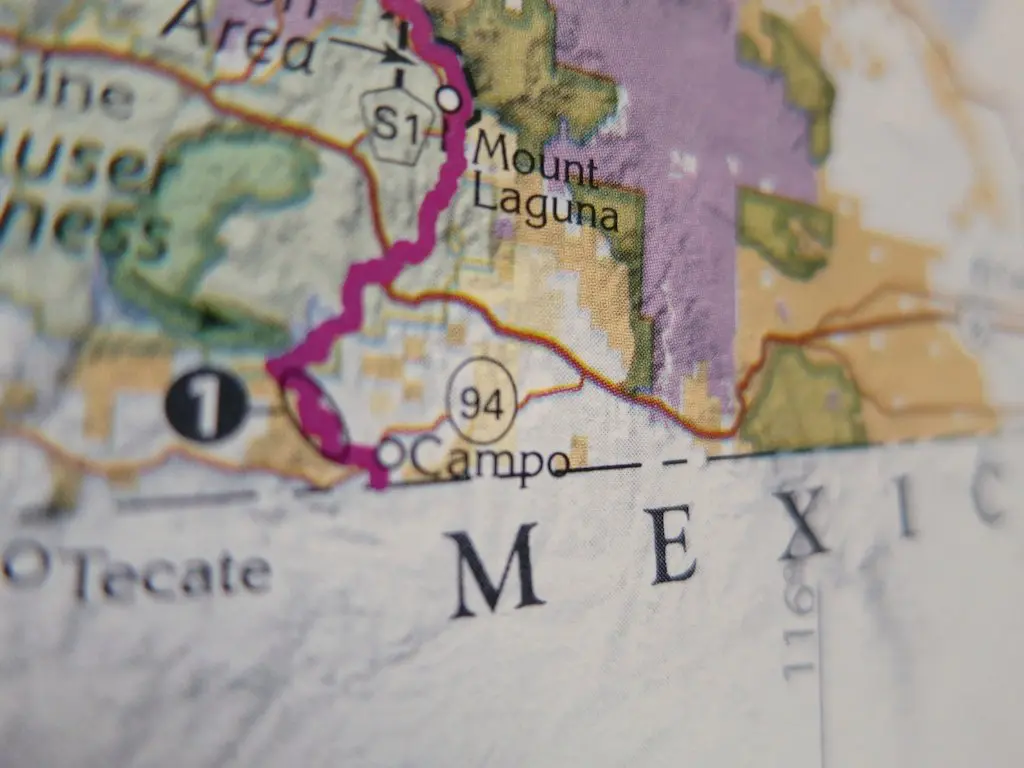
One Week Left: PCT Crunch Time
In exactly one week you will not be hard-pressed to find me squatted over a hole in the earth, loosening my bowels into the fertile…
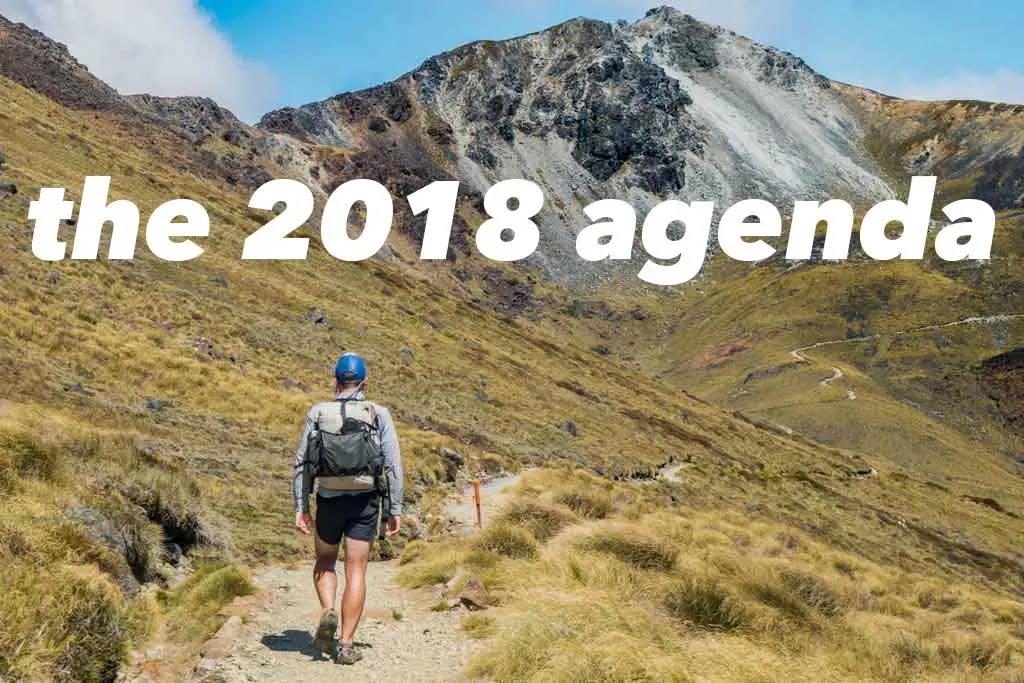
2018: What’s On The Agenda
Now that we’re well on our way on another journey around the sun (or at least that’s what the scientists tell us – have you…
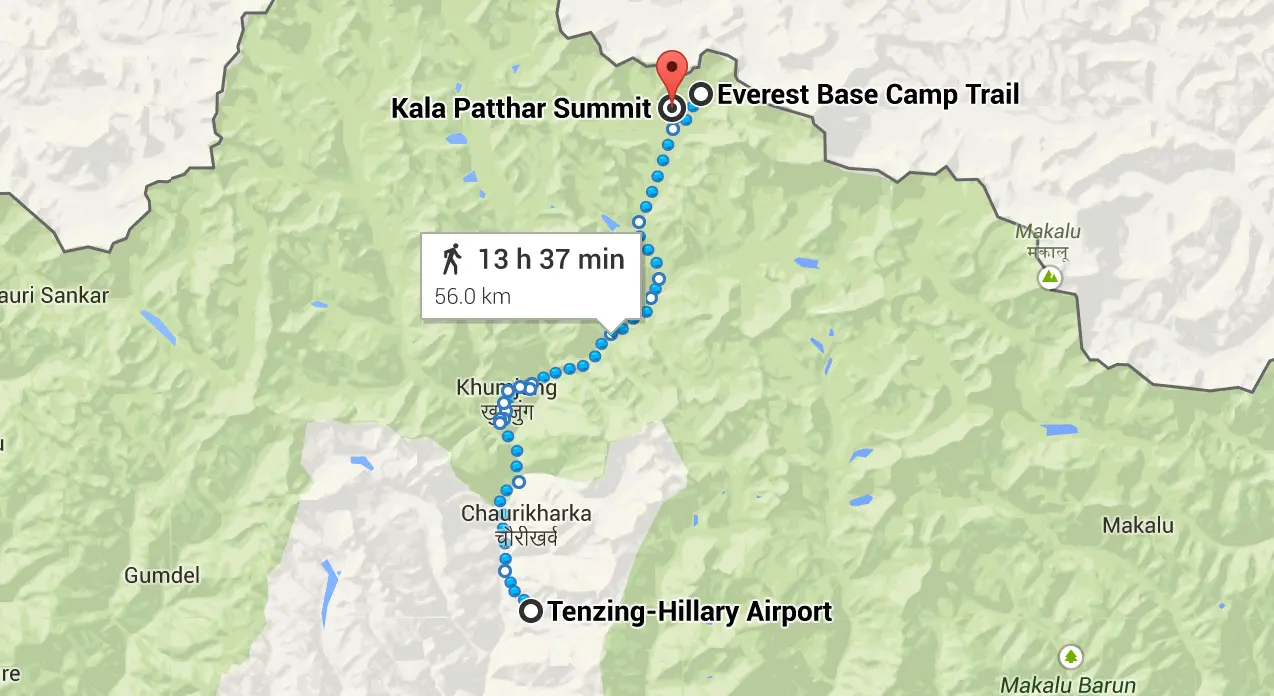
The Ultimate Everest Base Camp Plan
NOTE: Since writing this post I have returned from Everest Base camp and answered all the questions I had here in the post, Everest Base…
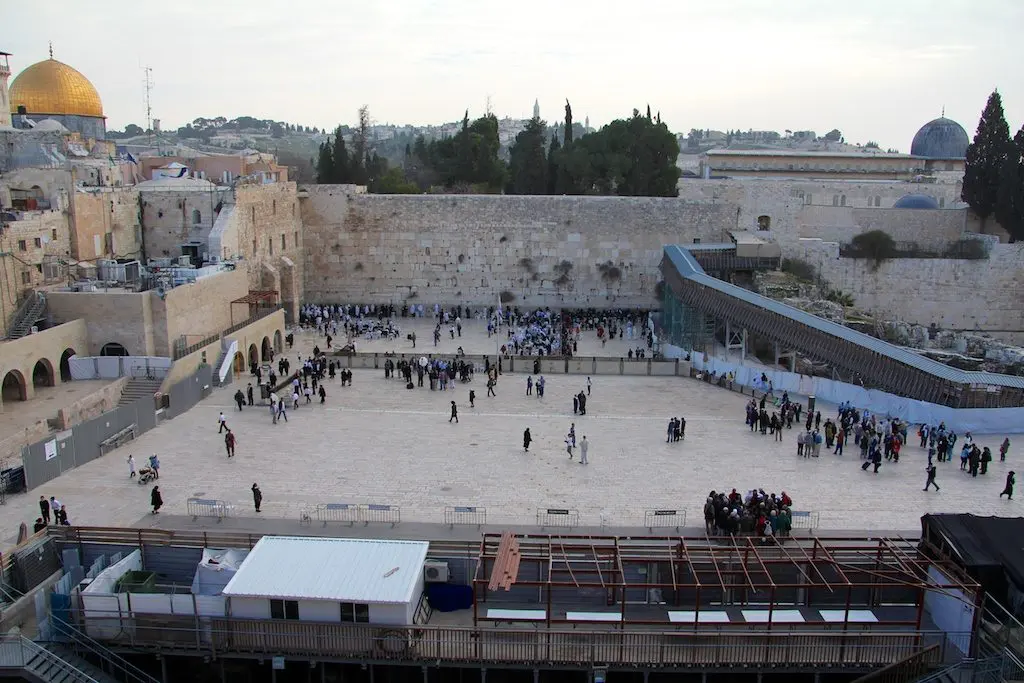
Prelude to The Holy Land
In the Middle of the East the Jews have settled a small piece of land the size of New Jersey, and this most holy of…
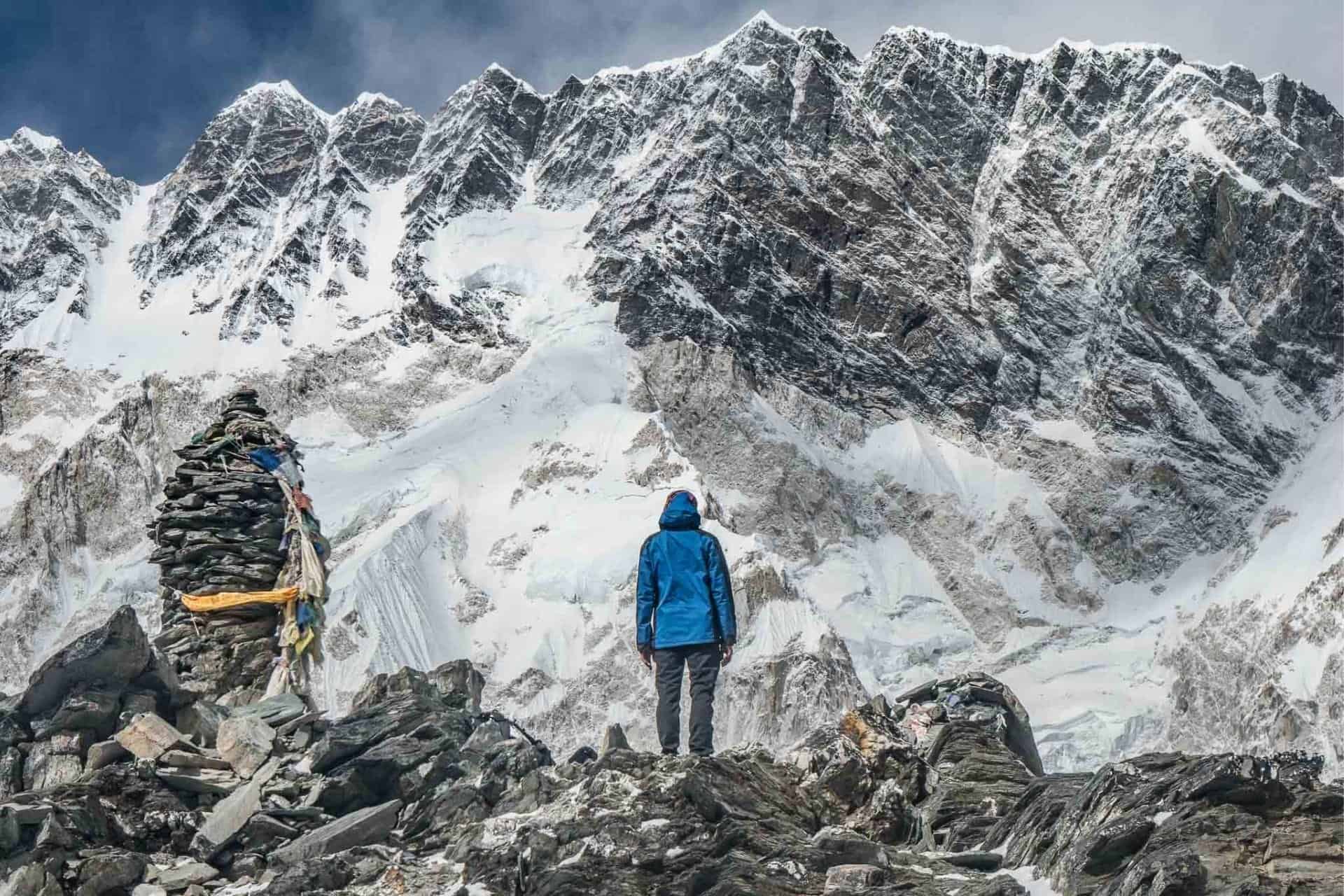
Thru-Hiking Nepal: The Great Himalaya Trail
The Great Himalaya Trail (GHT) is a proposed route stretching the length of the Himalayas through Pakistan, India, Nepal, Bhutan, and Tibet. The GHT’s western…
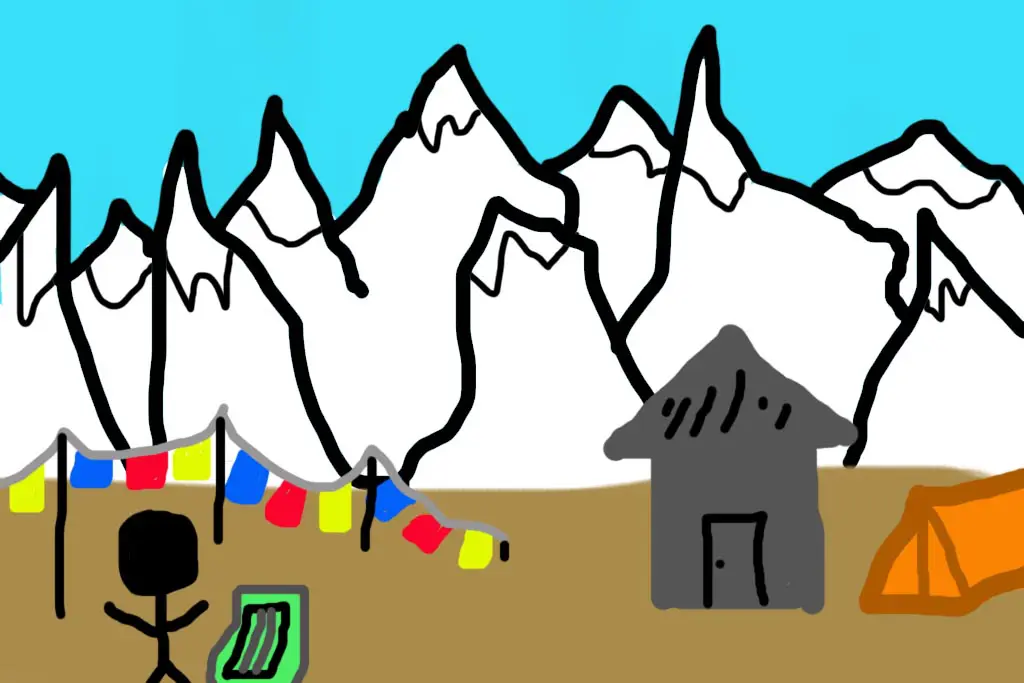
To Everest We Go
Japan has been great! At least that’s what I tell everyone. My almost five months in the country constitute the longest consecutive period of time…
I’m sure you’ll do great. I am looking forward to following your journey via dot-watching, insta pictures, and future blog posts. Enjoy !
Now I just have to cross my fingers that my calf and lower back will stop hurting before the start.
You’ve got this! Thanks for the glimpse into your mindset. As you well know, the mental game is the most critical part. It’s a beautiful route!
Thank you! Honestly, I’m most worried about the potential for mud…
Leave a Reply Cancel reply
Your email address will not be published. Required fields are marked *

Tour Divide 2024 Live Tracker
Follow on smart phones with BlueDot App!
Previous / Next / View all
About the Tracker
SORT CONTENT BY LOCATION
CLICK TO DRILL DOWN BY COUNTRY/PROVINCE
Your browser is ancient! Upgrade to a different browser or install Google Chrome Frame to experience this site.
Inspiration
- Bikepacking 101
- Join/Support

- View Latest/All
- Bikepacking Videos
- Your Stories
- Rider's Lens
- Field Trips
Popular Tags
- #bikerafting
- #Tour-Divide
- #family-bikepacking
- #winter-bikepacking
- #1Q5V (1 Question 5 Voices)
Gear/Reviews
- Bikepacking Bags
- Camping Gear
- Accessories
- #Editors-Dozen (Our Favorite Gear)
- #Gear-of-the-Year
- #MYOBG (DIY)
- #Decade-in-Review (Best of All Time)
The Gear Index
Latest indexes.
- Mini Panniers
- Saddlebags & Top Openers
- Cargo Cages & Anything Bags
- Gravel Bars
- Drop Bar 29ers
Bikepacking Bikes
- Rigid & Plus Bikes
- Drop-bar & Gravel
- Full Suspension
Rigs & Roundups
- Rider & Rig
- Race/Event Rig Roundups
- Worthy Builds
- Handbuilt Bikes
- #29+ (29-plus)
- #vintage-mountain-bikes
- #cargo-bikes
- Readers' Rigs (Dispatch)
- New Bikes (Dispatch)
Plan Your Trip
- Bikepacking Guides
- Bikepacking Food
- Gear & Pack Lists
- Bike Photography
Essential Reading
- Leave No Trace (for Bikepackers)
- Guide To Bikepacking Bags
- Bikepacking Gear That Lasts
- #Bikepacking-Awards
- Power Of An Overnighter
- Advice For New Bikepackers
- Our Favorite Bikepacking Routes
-
Where to Begin
We have over 300 original and curated bikepacking routes in our global network spanning nearly 50 countries.

Start at our worldwide routes map to dig into our detailed guides with GPS maps and inspiring photography.
By Location
- The United States
- Latin America
- Middle East
By Length (days)
- Overnighters & S24O
- Weekend Routes (2-4)
- Week-long Routes (5-10)
- Odyssey Routes (11-30)
- "Freakouts" (31+)
Local Overnighters
The Local Overnighters Project is a unified effort to document and map one-night bikepacking routes all over the world—by locals, in their own backyards.
The Bikepacking Journal is our biannual printed publication. Each issue features a collection of inspiring writing and beautiful photography. Find details on the three most recent issues below, join the Bikepacking Collective to get it in the mail (anywhere in the world), or click here to find a collection of selected stories in digital format.

For Issue 11, we head to Iceland with two contributors and photographers, plus share a handful of brilliant adventures from Mexico, Spain, the Republic of Georgia, and riders' own backyards...

The special edition 10th issue of The Bikepacking Journal is one you won’t want to miss! It features 25% more pages with extra stories, bonus art and maps, and much more...

Issue 09 takes readers on trips through time—one to the early days of bicycles—and offers several reminders to be grateful for supportive friends and family, and strangers we meet along the way...

The Great Divide Mountain Bike Route (GDMBR) Planning Guide
% singletrack, % rideable (time), total ascent, difficulty (1-10).
- 4 Climbing Scale Fair 56 FT/MI (11 M/KM)
- - Technical Difficulty
- - Physical Demand
- - Resupply & Logistics

Contributed By

Matt and Brett
A view from two wheels.
*We acknowledge that the majority of this route travels through the unceded traditional territory of the First Nations and Indigenous peoples who first occupied it. Learn more at Native-Land.ca .
The Great Divide Mountain Bike Route (GDMBR), developed and mapped in 1997 by the Adventure Cycling Association , is approximately 2,700 miles long and is considered by many to be the birthplace of bikepacking as a sport. The route follows the Continental Divide and is 90% off-pavement using high-quality dirt roads, gravel roads, trails, and a few short sections of unmaintained tracks. Bikepacking the GDMBR requires only intermediate off-road mountain biking skills, but it is a painstaking test of endurance based on the sheer scale of the route, with over 200,000 feet (60,960 meters) of elevation gain and loss.
The GDMBR is routed through a cross-section of the American West defined by spectacular scenery, a variety of landscapes, historic mountain towns, and boundless remote wilderness. Highlights include the Flathead Valley in Alberta, Grand Teton National Park, the Great Divide Basin in Wyoming, South Park, Boreas Pass in Colorado, Polvadera Mesa, and the Gila Wilderness in New Mexico. Colorado’s Indiana Pass, at 11,910 feet (3630 meters), is the highest point on the route. Throughout the route riders encounter wild river valleys, remote mountain wilderness, open grasslands, high desert, and towards the southern end of the route, an amazing span through the Chihuahuan Desert.
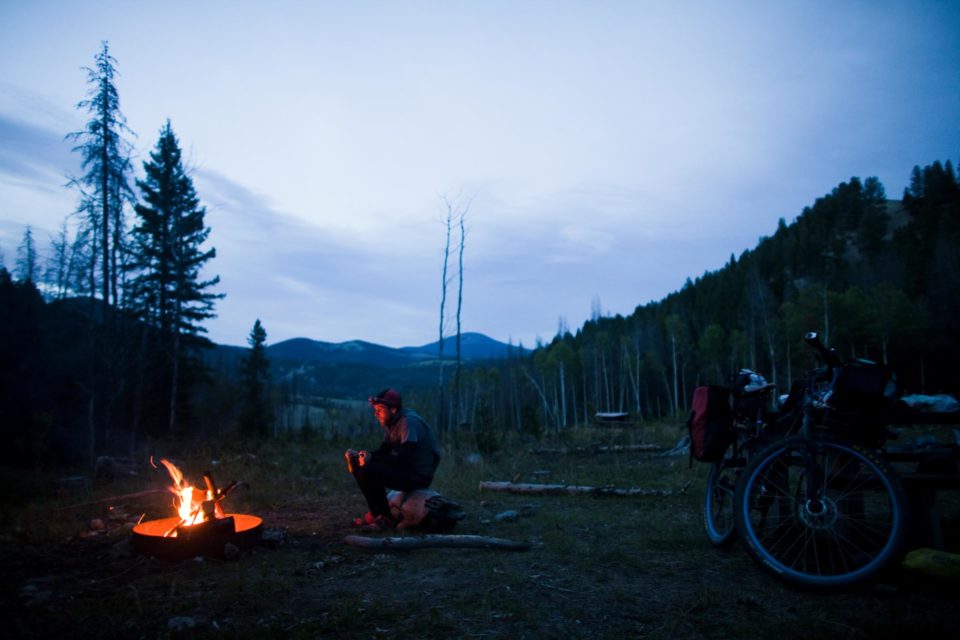
The route is best known for the Tour Divide , an annual self-supported race. In this event, the race clock runs 24 hours a day and riders are allowed no outside support other than access to public facilities such as stores, motels, and bike shops. The record time to complete the Tour Divide is 13 days, 22 hours and 51 minutes and was set in 2016 by Mike Hall (see Trail Notes for a full list of records). The Tour Divide has been raced and completed on both single speed bicycles and tandem bicycles. The race, which has neither entry fees nor prizes, usually starts in the second weekend of June.
Photo Gallery
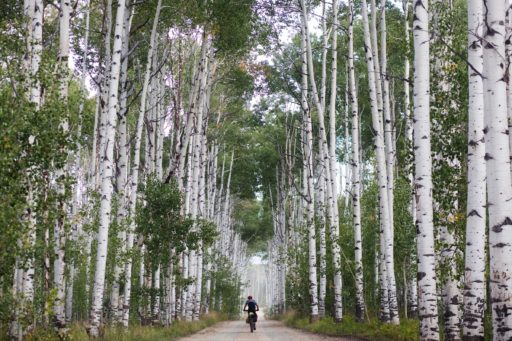
Map & GPS
Note that the route and GPX featured here are the Tour Divide route and not the full GDMBR. The differences are fairly subtle, but there are a few reroutes to avoid mud and other obstacles, mainly in New Mexico. For the latest Tour Divide GPX data from TopoFusion, click here ; you can find a detailed map of the 2023 Tour Divide route with POIs under the Trail Notes tab below. Also, we recommend using the Adventure Cycling Association’s GDMBR mapset . Unless you typically rely only on a GPS, these maps are important and quite easy to navigate.
Before you set off, it is crucial to check Adventure Cycling Association’s updated Addenda . Throughout the season, riders contact ACA about current route conditions and offer helpful reroutes for impassable sections. We forgot to do this early on and ran into a deadend created by a massive washout. To avoid significant backtracking, we twice forded a massive river. Also, check the Temporary ACA Route Road Closures forum thread for more up to date issues. Also, see Trail Notes tab for more information on GPX and navigation.
Submit Route Alert
As the leading creator and publisher of bikepacking routes, BIKEPACKING.com endeavors to maintain, improve, and advocate for our growing network of bikepacking routes all over the world. As such, our editorial team, route creators, and Route Stewards serve as mediators for route improvements and opportunities for connectivity, conservation, and community growth around these routes. To facilitate these efforts, we rely on our Bikepacking Collective and the greater bikepacking community to call attention to critical issues and opportunities that are discovered while riding these routes. If you have a vital issue or opportunity regarding this route that pertains to one of the subjects below, please let us know:
- Name * First Last
- Subject * SELECT SUBJECT* Road or trail closure Land access issue Advocacy opportunity** New essential amenity Other reroute or access issue
**Advocacy opportunities may include bringing awareness to a new trail project, conservation initiative, access potential, or local effort that we might help with or bring awareness to via our broad-reaching platform.
- Description *
*By clicking submit, you're also subscribing to our email list. You'll receive an opt-in email before being added.
- Phone This field is for validation purposes and should be left unchanged.
Trail Notes
- Riding through a cross-section of the American West defined by spectacular scenery
- A variety of landscapes , historic mountain towns, and boundless remote wilderness.
- The Flathead Valley in Alberta
- Grand Teton National Park
- The Great Divide Basin in Wyoming
- Boreas Pass in Colorado,
- Polvadera Mesa
- Gila Wilderness in New Mexico
- Colorado’s Indiana Pass , at 11,910 feet (3630 meters), is the highest point on the route
- Wild river valleys and remote mountain wilderness, open grasslands, high desert
- An amazing span through the Chihuahuan Desert.
Weather and When to Go
Weather on the GDMBR is always changing. At elevation, the weather can switch in the blink of an eye. In general, the route is mostly passable during late June through mid-October, but be aware that it can snow at elevation any time of the year. After much research, we decided that a mid August departure date would be close to ideal. The weather in Canada and northern Montana would be relatively warm and we would beat the snow in Colorado while escaping the heat of New Mexico. We were pretty spot on with our assessment but overlooked the monsoon season in New Mexico.
During our travels we woke up with frost on our tent a few times. But, with sleeping bags rated to 20 degrees we were fine. Layering is a necessity, and if you are packing ultralight, consider a sleeping bag liner for higher elevations.
If you decide to travel during June or early July, be aware that you will most likely experience snow in the high mountain passes. Also, if places along the route experienced heavy snow that season, the rivers and streams may be much higher than normal.
Getting there and Getting Started
The best way to get to Banff is to fly into the Calgary International Airport (YYC). Banff is approximately 80 miles (125 km) west of Calgary. From the airport there are a few options to get to Banff. You can rent a car, hire a shuttle, or ride. We decided that it would be easiest to rent a car and split the cost between two people. This allowed us the freedom to choose a starting point own and travel at our leisure.
Once in Banff, a small, posh mountain resort town, we found a parking structure and set about assembling the bikes and kits. There are a few bike shops in town, and if you need any help or last minute supplies, we highly recommend visiting the friendly people at Snowtips-Bactrax. We encourage you to allow yourself more time than you think for last minute errands. We found ourselves running out of daylight after grocery shopping and bike building delays. It may be helpful to book a room at one of the many hostels in town. If you go this route, reserve in advance, because the lodging in town is not cheap! We ended up riding a little out of town to Tunnel Mountain Campgrounds, which was also a touch expensive.
Getting Back from Antelope Wells
Once you arrive in Antelope Wells, instead of a grand finish line, you’ll be met with an anticlimactic border fence. No crowds around the finish, just the Chihuahuan desert and border patrol agents. To avoid an extra 200 mile ride to the airport, it is best to secure a pickup from a shuttle service . From there, you have the choice of two airports. Fly from El Paso, TX (ELP) or Tuscon, AZ (TUS). Both are around 3-4 hours drive from Antelope Wells. After much debate, we decided to fly out of El Paso. We also shipped our bikes via Amtrak… cheap and easy to pack.
Much of the route passes through BLM, national parks, and dedicated wilderness. There are plenty of primitive camping sites along the route. The guidebooks and ACA maps will have accurate camping and lodging recommendations, so depending on your daily pace and number of stops throughout the day, you can plan accordingly.
There are quite a few options for lodging through WarmShowers.org along the route. Check them out in advance and download the app to figure out as you are on the ride.
Also, take advantage of the cyclist only lodging listed on the map as much as possible. Some of them are truly magical.
Tip: Be sure to call ahead for the cyclist only lodging after Lincoln and just before Helena. It is HIGHLY recommended to stay the night there. Brush Mountain Lodge is also a must. Very affordable and the crew there is incredible, very knowledgable and supportive of the GDMBR. Also, a jaccuzzi.
During the Divide you’ll be faced with plenty of long stretches where there are limited to no supplies. Reliable food and water sources on some portions of the route are over 100 miles (160 km) apart. If you follow the ACA mapset, you will get a good idea of where you need to pack extra supplies. Packing a water filter is highly recommended. There are only a few days on the trip when you will not be passing through a town with at least a gas station. But always pack more food and water than you think you’ll need. Better safe than sorry. A couple notable stretches void of supplies include the Flathead Valley, Great Basin, and Polvadera Mesa.
The GDMBR passes through some larger towns, including Helena and Butte, Montana, Pinedale and Rawlins, Wyoming, Steamboat Springs, Breckenridge, Salida, and Del Norte, Colorado, and Grants and Silver City, New Mexico. Otherwise, it’s the occasional small town, with a limited variety of goods and services available to riders.
Tip: Before the Great Basin, stock up properly in Pinedale… Atlantic city was completely closed when we passed through.
Tip: The Diagnus well in the GB is really easy to miss. Really pay close attention to your milage. It could have changed by now, but look for piled up rocks and a stick with a bright colored tip.
Tip: Hopewell Lake campground has very delicious water, great place to fill up and listen to coyotes at night.
Tip: Toaster House in Pie Town
The Route GPX
We used the Tour Divide GPX here. It is NOT the official GDMBR ACA route, as described on the ACA maps. It includes several alternate sections not sanctioned by ACA but required by the TD event, including a route that skips Rawlins, WY, instead using the town of Wamsutter for resupply. Some of these alternates are described below per TopoFusion.
- Added new TD-specific Fernie Alt. This alt is not recommended for a BoB trailer!
- Added High Rockies Trail-North, west side of the Spray River
- Added new route through Butte including singletrack on “Big Butte”
- Changes to Kanasakis Lakes Provincial Park Road instead of bike path through park.
- Adds new two re-routes in Wyoming, scouted by Matthew Lee. 1) Union Pass / Fish Lake. 2) Great Basin/Wamsutter (skipping Rawlins and the heavy construction south of town).
- Added new ACA alternate into Butte, avoiding freeway riding.
- Added FR 212 detour near Kremmling, CO and the Gold Dust trail near Breckenridge.
For detailed annual GPX files for the Tour Divide, see this page on TopoFusion.com .
POI (Points of Interest)
There are several great resources for pooling POIs for the Tour Divide and GDMBR. One is ACA’s maps and there is also this detailed PDF list . Additionally, Sarah Swallow created this detailed POI map of the 2023 Tour Divide route:
Sarah also put together a route collection breaking the 2023 Tour Divide route into seven sections. You can find that here . Plus, she provided access to her custom resupply cheat sheet, which details exact mile marker locations and distances between all services within each of the seven sections along the entire Tour Divide 2023 route. Find that here .
Additional Navigation Materials and Tips
You may want to check out Michael McCoy’s Cycling the Great Divide guidebook . This book can be instrumental to your daily planning. Although the book and maps have the same cue sheet, they are slightly off in the actual mileage, so take each with a grain of salt. The book is broken down into 70 riding days with elevation details and local history. We would read ahead to get a good idea of what was in store for us. Typically, we rode one day to each of the book’s two days . Both the guidebook and map offer a couple of route alternates. We usually rode the original route but a few times we had to either make up time and take a paved alternate or create our own alternate to avoid impassible sections that resulted from monsoon rains.
Tip: Take the map and guide book with a bit of skepticism and prepare for the worst. Towns might be closed (Atlantic City and Pie Town were both closed down for us), important creeks for water might be dry, and you will be climbing a lot, even if it doesnt say it.
Tip: The roads in New Mexico are the most primitive and washboarded of the whole route. Use caution. We rode on fully rigid rigs and were wished we had front suspension or a thud buster seatpost most of the ride… especially in New Mexico. A 29+ bike may be ideal, although some sections the extra fat could definitely slow you down.
Timing and Records
It’s a small and select group of athletes. Here are your Grand Depart winners since the inception of the race in 2008.
Men: Matthew Lee – 19:12:00 Women : Mary Collier – 29:17:37
Men: Matthew Lee – 17:23:45 Women: Jill Homer – 24:07:24
Men: Matthew Lee – 17:16:10 Women: Cricket Butler – 26:09:36
Men: Kurt Refsnider – 15:20:51 Women: Caroline Soong – 22:09:59
Men: Ollie Whalley (R) – 16:02:54 Women: Eszter Horanyi – 19:03:35
Men : Mike Hall – 14:11:55 Women: Sara Dallman – 22:19:05
Men: Jefe Branham – 16:02:39 Women: Alice Drobna (SS) – 22:06:36
Men: Mike Hall – 13:22:51 Woman: Jackie Bernardi – 19:21:41
Men: Brian Lucido – 14:22:50 Women: Marketa Peggy Marvanova – 22:18:04
Men: Lewis Ciddor – 15:02:08 Women: Alexandera Houchin – 23:03:51
Men: Christopher Seistrup – 15:11:24 Women: Alexandera Houchin – 18:20:26
CANCELED (COVID-19)
Men: Jay Petervary – 14:19:15 Women: Lauren Brownlee – 20:05:43
Notable ITT’s
Jay Petervary – 2011 – 17:09:01 Jay Petervary – 2012 – 15:16:04 Billy Rice – 2013 – Yo-Yo (NoBo & SoBo) 44:42:00 Lael Wilcox – 2015 – 15:10:59
Current Records
(*) Year with a re-route, race records could not be made; (R) Rookie; (SS) Single Speed. (**) Tour Divide Classic (abbreviated from Canada border to Antelope Wells)
Route Details and Resources
- Adventure Cycling Association (GDMBR)
- Paula and Scott’s Divide route (plus updated GPX files)
- Temporary ACA Route Road Closures (forum thread)
- ACA GDMBR Shuttles
- Elevations and Distances
- Gradient Chart
- Profile Map
- PDF of POIs
Helpful links
- QA With Lael Wilcox (Women’s Route Record Holder)
- 2015 Winner Josh Kato’s Tour Divide Gear List & Salsa Fargo
- Ride the Divide , the web site about the film
- TourDivide.org a web site about the annual race
- Wikipedia (GDMBR)
- Matt and Brett’s photo book about riding the GDMBR on their site
Gear Planning
Researching and procuring gear is a long and important process in preparing for the GDMBR. Weight and consideration for food provision space are paramount details when building your kit. There are many ways to approach a gear kit for the Tour Divide. Matt and Brett both rode nearly identical Surly Ogres, equipped with XT/SLX drivetrain and hydraulic disc brakes. Their bikes featured Velocity Blunt 35 rims laced to Alfine dynamo hubs up front and XT in the rear. Their tires of choice were Maxis Ardents 2.3” set up tubeless.
Fortunately neither experienced mechanical issues during the route. The only things that broke were the racks, which is a pretty good case for using a soft bag setup on such a route. Packlists will vary by riding style, goal completion time, and skill level, but, for what it’s worth, this is their complete list:
Clothing from Kitsbow
- 2 X Jersey – one Polo, one ventilated riding jersey
- 2x overshorts
- 1x ventilated undershorts
- Arm/knee warmers
- Racing bibs
- Giro Merino base layer
- Giro Insulated vest
- Giro Terraduro Shoes
- Giro Full fingered Gloves
- Icebreaker merino long underwear/top
- Rain Jacket
- Rain Shorts
- Tent: Sierra Designs lightning 2
- Sleeping Bag: Enlightened Equipment Revelation Pro 850 Drydown Quilt
- Sleeping Pad: Thermarest prolight.
- Cooking: Solo Stove x 2
- 8 inch cook pan
- Headlamp from Black Diamond
- Katadyn Hiker Pro Water Pump Filter
- Battery bank for charging devices
- Sinewaves Revolution USB Dynamo Charging Device
- Kindle – with Cycling the Great Divide Guidebook by Michael McCoy
- Frame: Surly Ogre Medium
- Fork: Surly Ogre
- Headset: Cane Creek 40
- Stem: Thomson Elite X4</li>
- Handlebar: Salsa Bend
- Shifter: Shimano SLX
- Grips: Ergon GC1
- Seatpost: Thomson Elite
- Saddle: Brooks Cambium
- Seat Clamp: Blue Salsa
- Front Hub: Shimano Alfine DH-S501 32h
- Rear hub: Shimano XT 32h
- Rims: Blue Velocity Blunt 35
- Tires: Maxxis Ardent 2.25
- Cranks: Shimano SLX 36/28
- Pedals: Shimano spd
- Bottom Bracket: Shimano
- Cassette: Shimano 11-36
- Chain: Shimano HG54
- Brakes & Levers: Shimano XT hydraulic
- Light: Supernova E3 Triple
- Racks: I’d highly recommend Tubus or Racktime
- Frame Bag: Surly branded Revelate
- Seat Bag: Revelate Pika
- Handlebar Bag: Swift Industries Paloma
- Cage: Salsa Anything Cage
- Panniers: Ortlieb Front Roller
- Additional: 2 Seal Line Nimbus Stuff Sacks
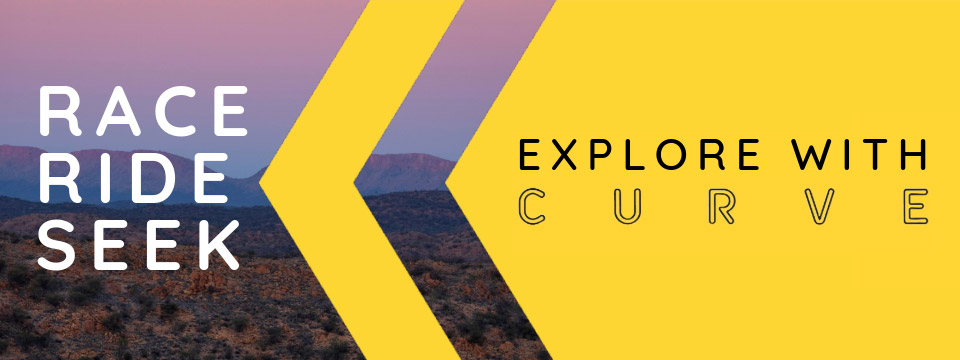
Terms of Use: As with each bikepacking route guide published on BIKEPACKING.com, should you choose to cycle this route, do so at your own risk. Prior to setting out check current local weather, conditions, and land/road closures. While riding, obey all public and private land use restrictions and rules, carry proper safety and navigational equipment, and of course, follow the #leavenotrace guidelines . The information found herein is simply a planning resource to be used as a point of inspiration in conjunction with your own due-diligence. In spite of the fact that this route, associated GPS track (GPX and maps), and all route guidelines were prepared under diligent research by the specified contributor and/or contributors, the accuracy of such and judgement of the author is not guaranteed. BIKEPACKING.com LLC, its partners, associates, and contributors are in no way liable for personal injury, damage to personal property, or any other such situation that might happen to individual riders cycling or following this route.
FILED IN (CATEGORIES & TAGS)
Please keep the conversation civil, constructive, and inclusive, or your comment will be removed.
Rad Companies that Support Bikepacking

You need to be logged in to use these features. Click here to login , or start an account if you’re not yet a member of the Bikepacking Collective…

COMMENTS
Tour Divide challenges a fixed course annually called the Great Divide Mountain Bike Route.Not only is the Great Divide Route a true classic, its 'primary track' is pursued with consistency by TD athletes so that year to year, finish times may always be compared directly to the record books.. The Great Divide Route is the world's longest off-pavement cycling route.
BIKE: I'll be riding the Tour Divide on a steel 2022 Salsa Fargo with Ritchey Venturemax road drop-bar with Wolf Tooth bar tape to compensate vibration. The bike features a pair of Hunt Race XC wheels with tubeless Continental Protection 2.35" Cross King front and 2.25" Race King back 29" tires, SRAM GX Eagle 1×11 11-50 drivetrain with ...
September 22, 2023. Panniers can be fast! Lachlan Morton recently set a blistering ITT time of 12 days, 12 hours and 21 minutes to get from Banff to Antelope Wells on the Great Divide Mountain Bike Route. For those who aren't familiar, this 4296km/2670mi dirt road route traverses the length of the Rocky Mountains from Canada to the Mexican ...
Josh's Tour Divide bike uses a suspension fork (and lots of prototype Tailfin bags). Image: Josh Ibbett. Only 30% of all TD bikes are using suspension forks. Suspension will undoubtedly reduce rider fatigue on the rougher sections of the route. And given that you can lock out most suspension, the biggest disadvantage is simply that it adds ...
The Tour Divide is an annual mountain biking ride traversing the length of the Rocky Mountains, from Canada to the Mexican border.Following the 2,745-mile (4,418 km) Great Divide Mountain Bike Route, it is an ultra-distance cycling ride that is an extreme test of endurance, self-reliance and mental toughness. The ride format is strictly self-supported, and it is not a stage race - the clock ...
BIKE: I will be racing the Tour Divide/Border to Border on a Mosaic hard tail titanium frame mountain bike with 29-inch wheels. The bike has Nox carbon rims with Industry Nine hubs. The front wheel has a new Forekaster 2.35" tire and on the back a new a Maxxis Ikon 2.35". I will be riding with a 34T chainring and a 52 Sram Eagle cassette.
The Tour Divide is an annual 2,700-mile (4,300 km) self-supported bikepacking race following the Great Divide Mountain Bike Route (GDMBR). Most of the route follows dirt and gravel roads with a few sections of pavement or singletrack sprinkled in for good measure (along with the occasional hike-a-bike section).
The Tour Divide roughly follows the Great Divide Mountain Bike Route (GDMBR) is the most recognized and important off-pavement cycling route in the United States, if not the world. The route crisscrosses the Continental Divide from north to south starting in Banff, Alberta, Canada and finishing at the US/Mexico border in Antelope Wells, New Mexico.
Tour Divide is a ultra-cycling challenge to pedal solo and self-supported the length of Great Divide Mountain Bike Route...as fast as possible (!)In This Section: The RouteThe ChallengeGrand DépartITT-DivideRider ResourcesTour GuideLibraryTime-trial season on the Great Divide Route begins annually with Grand Départs, occurring approximately ...
The Tour Divide challenge is simple: Race the rooftop of North America by mountain bike; travel self-supported along all 2,745 miles of Adventure Cycling Association's Great Divide Mountain Bike Route; keep moving and be moved; exist well outside one's comfort zone in tackling a cross-continent bikepacking odyssey; finish as fast as possibl.
I'll publish separate articles breaking down my bikepacking gear (bags, camping gear, etc.) and my bike's cockpit - which took me way too long to figure out. I bought a Salsa Cutthroat GRX 600 as my bike because, as alluded to above, it was essentially built for and inspired by the Tour Divide (the route is on the downtube - but for ...
STEP 1: RACE OR TOUR. RACING PROS: Challenge and Achievement: Racing the Tour Divide offers a significant physical and mental challenge, providing a sense of accomplishment upon completion. Competitive Spirit: For those who enjoy competition, racing can be an exciting way to push personal limits and compete against others.
Each year, BIKEPACKING.com publishes the Rigs of the Tour Divide, which showcases participants' rigs and highlights some of their favorite components and gea...
[leadin]The Tour Divide is a 2,745-mile bike race from Banff, Canada, through the Rocky Mountains of the U.S., to the border of Mexico. For riders like David Markman, building up a custom mountain ...
Riding the Great Divide Mountain Bike Route (GDMBR) or racing the Tour Divide is a rite of passage for many bikepackers; it's seen as the "Big One" in North America. Stretching 2,745 miles from Banff, Alberta to Antelope Wells, New Mexico, it loosely follows the Continental Divide through the Rocky Mountains on a series of dirt and paved ...
The 2022 Tour Divide begins on Friday, June 10th at 8AM with over 200 riders following the 2,745-mile Great Divide Mountain Bike Route from north to south starting in Banff, Alberta, Canada and finishing at the US/Mexico border in Antelope Wells, New Mexico. The current record was set back in 2016 by the late Mike Hall (13 days, 22 hours, 51 ...
That's precisely what the 40-year-old Washington nurse and endurance cyclist did at last year's Great Tour Divide (GTD). His time not only won the 2,745-mile event, but it set the course ...
The Fastest Bikes of the Tour Divide Ultra Race (4,300KM Non-Stop) The Tour Divide is an off-road event that traverses the length of the Rocky Mountains from Canada to the Mexican border. The course is over 4,338 km long (2696 mi), and along the way, riders will gain over 60,000 m in elevation (200,000 ft). This ride is self-supported.
The Tour Divide challenge is based on one guiding principle: Cycle the GDMBR end-to-end, as fast as possible in a solo, self-supported fashion. The Particulars: Who: Any determined cyclist may challenge the Great Divide Route at any time, in either direction, to qualify for the Tour Divide (TD) General Classification (GC). When: All summer long...however, an informal common start date known as ...
That comes out to an average of 108 mi / 174 km a day. If I sleep six hours a night, spend an average of three hours per day not riding, and don't take any zero days, I need an average riding speed of 7.2 mph / 11.6 km/h. Based on my training, this is not something terribly difficult to accomplish on any single ride.
Live tracking event map for Tour Divide 2024 - The iconic 2700 mile race across the Great Divide Mountain Bike Route. Includes leaderboard coverage, race flow, replay and links to individual track history pages. Home Features Portfolio Trail Tracking About / Contact Tour Divide 2024 Live Tracker ...
The 2023 Tour Divide begins on Friday, June 9th, at 8 a.m. with around 200 riders following the roughly 2,700-mile Great Divide Mountain Bike Route from north to south starting in Banff, Alberta, Canada, and finishing at the US/Mexico border in Antelope Wells, New Mexico. The current record was set back in 2016 by the late Mike Hall (13 days ...
The Great Divide Mountain Bike Route (GDMBR), developed and mapped in 1997 by the Adventure Cycling Association, is approximately 2,700 miles long and is considered by many to be the birthplace of bikepacking as a sport. The route follows the Continental Divide and is 90% off-pavement using high-quality dirt roads, gravel roads, trails, and a ...
A US "ultra-endurance" cyclist has claimed a new world record for fastest woman to circumnavigate the globe by bike. Lael Wilcox took 108 days, 12 hours and 12 minutes to cycle 29,169km (18,125 ...